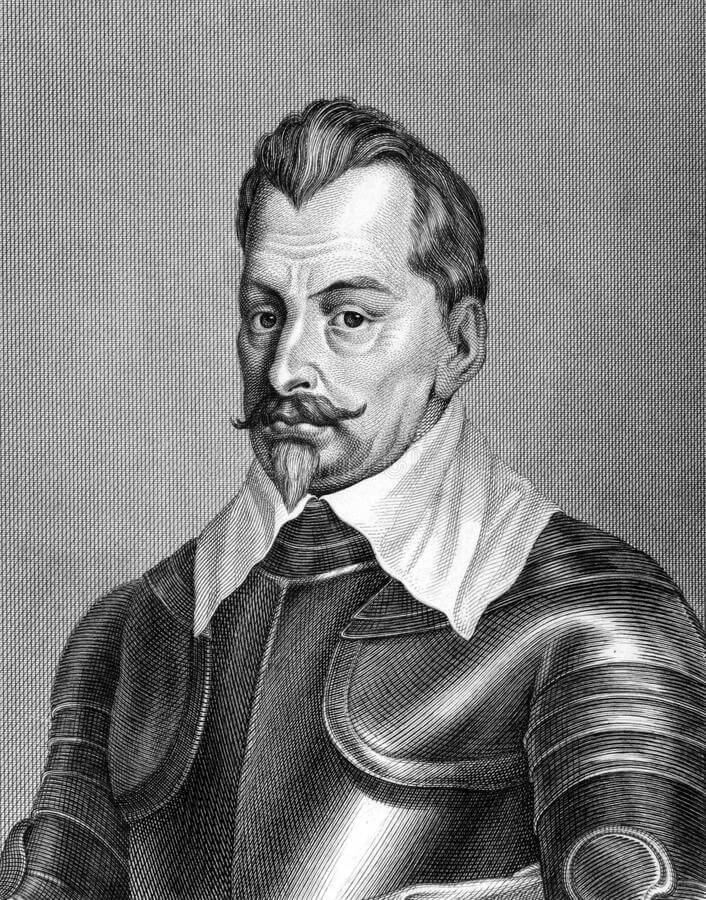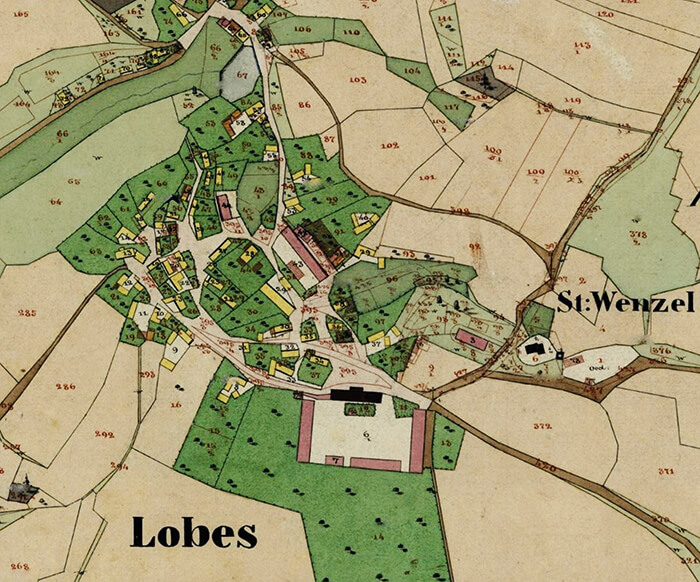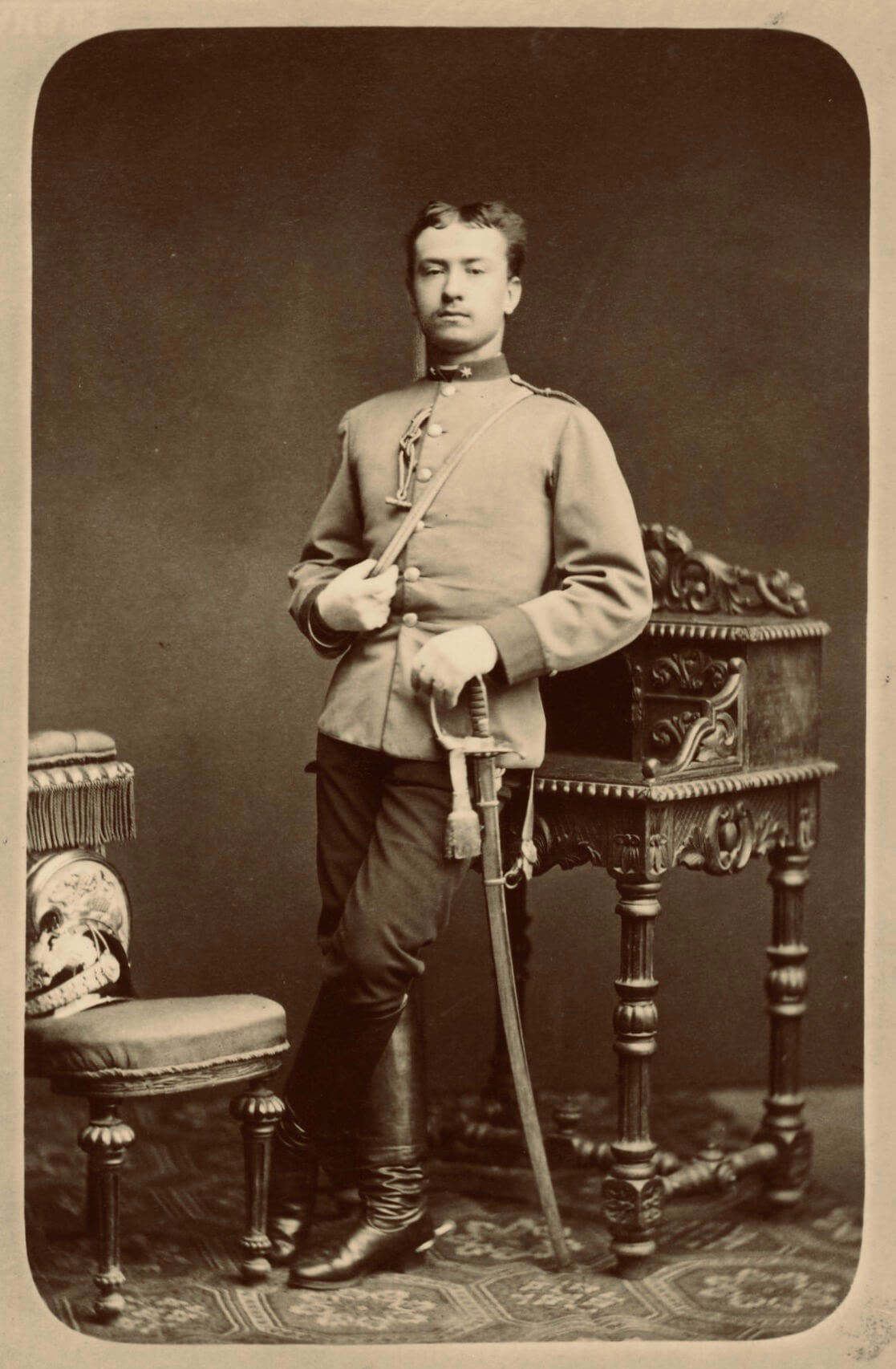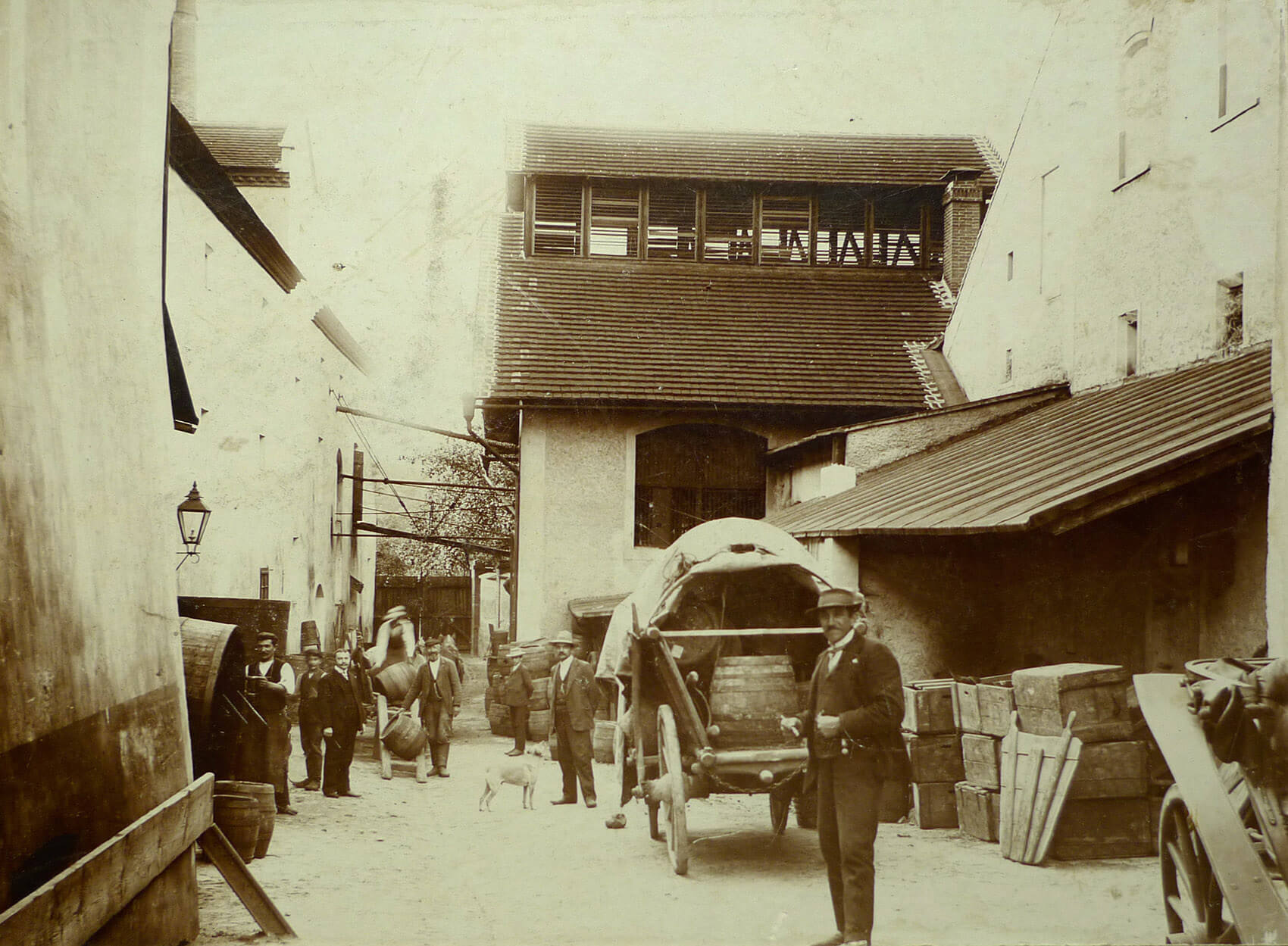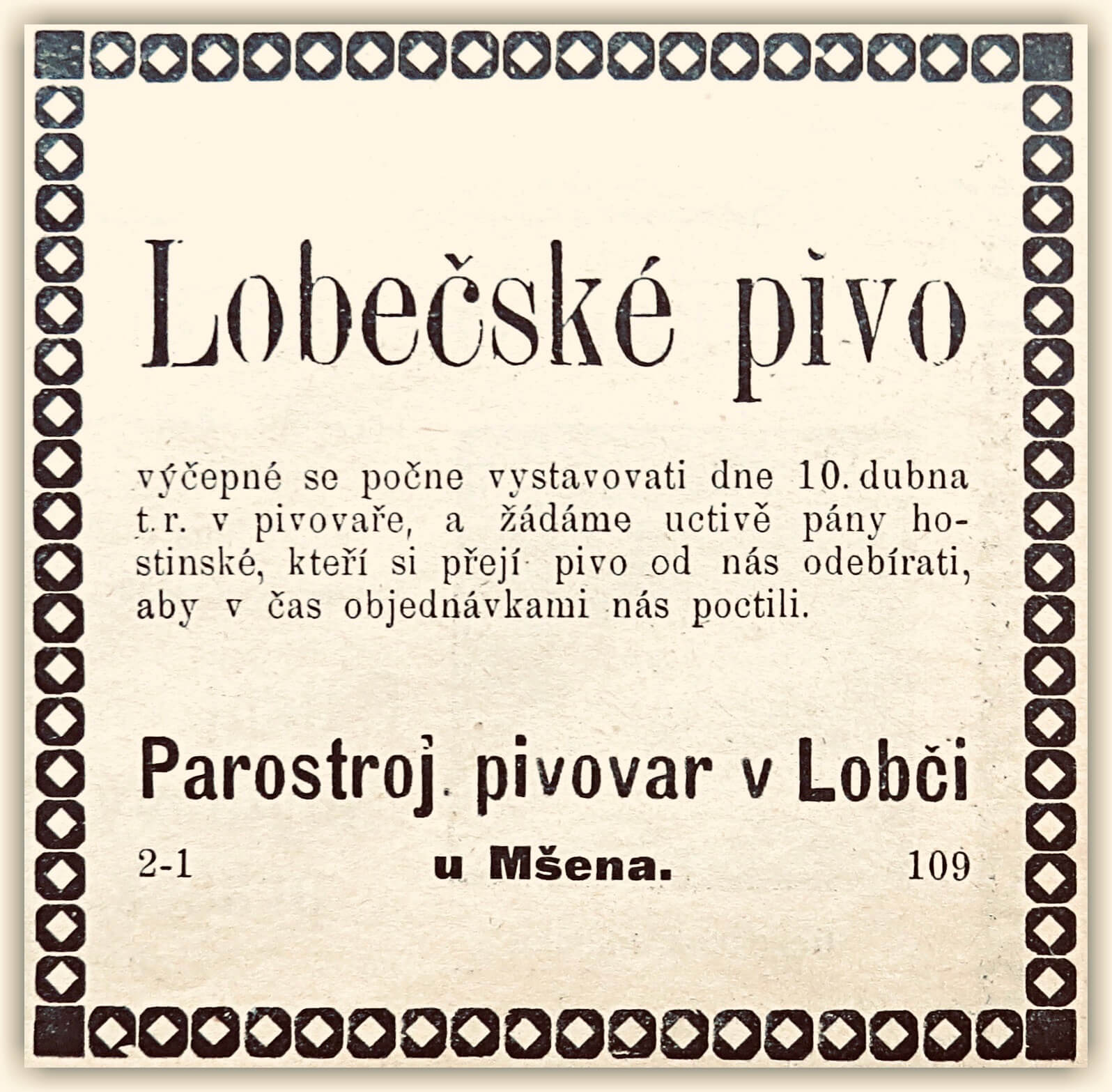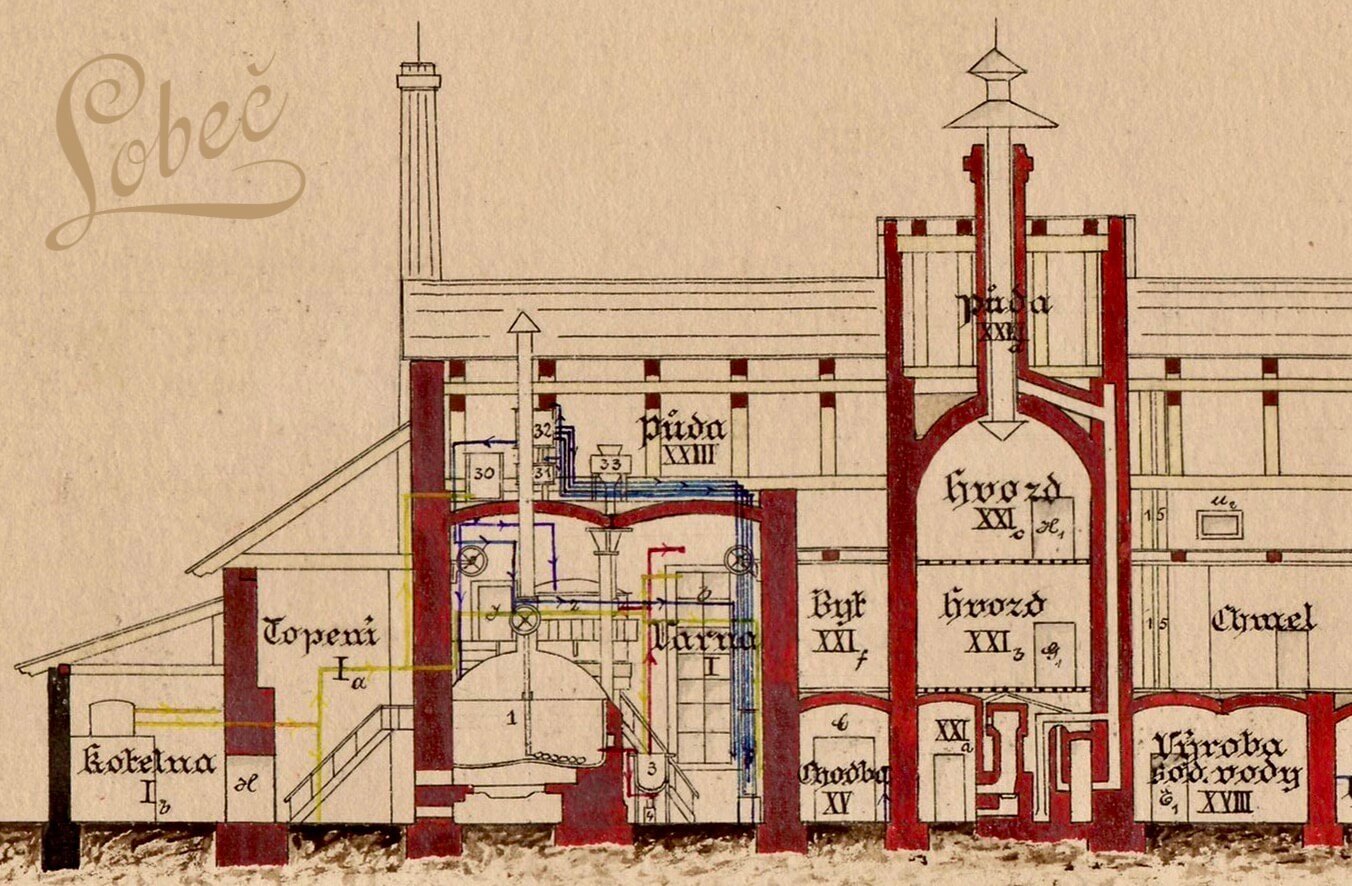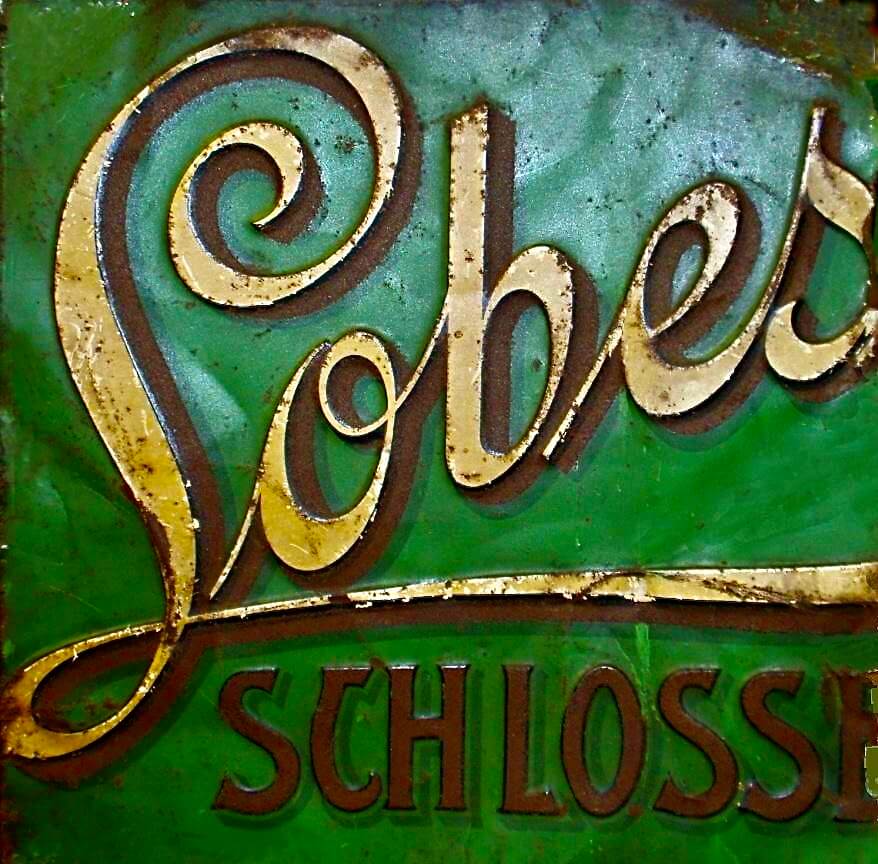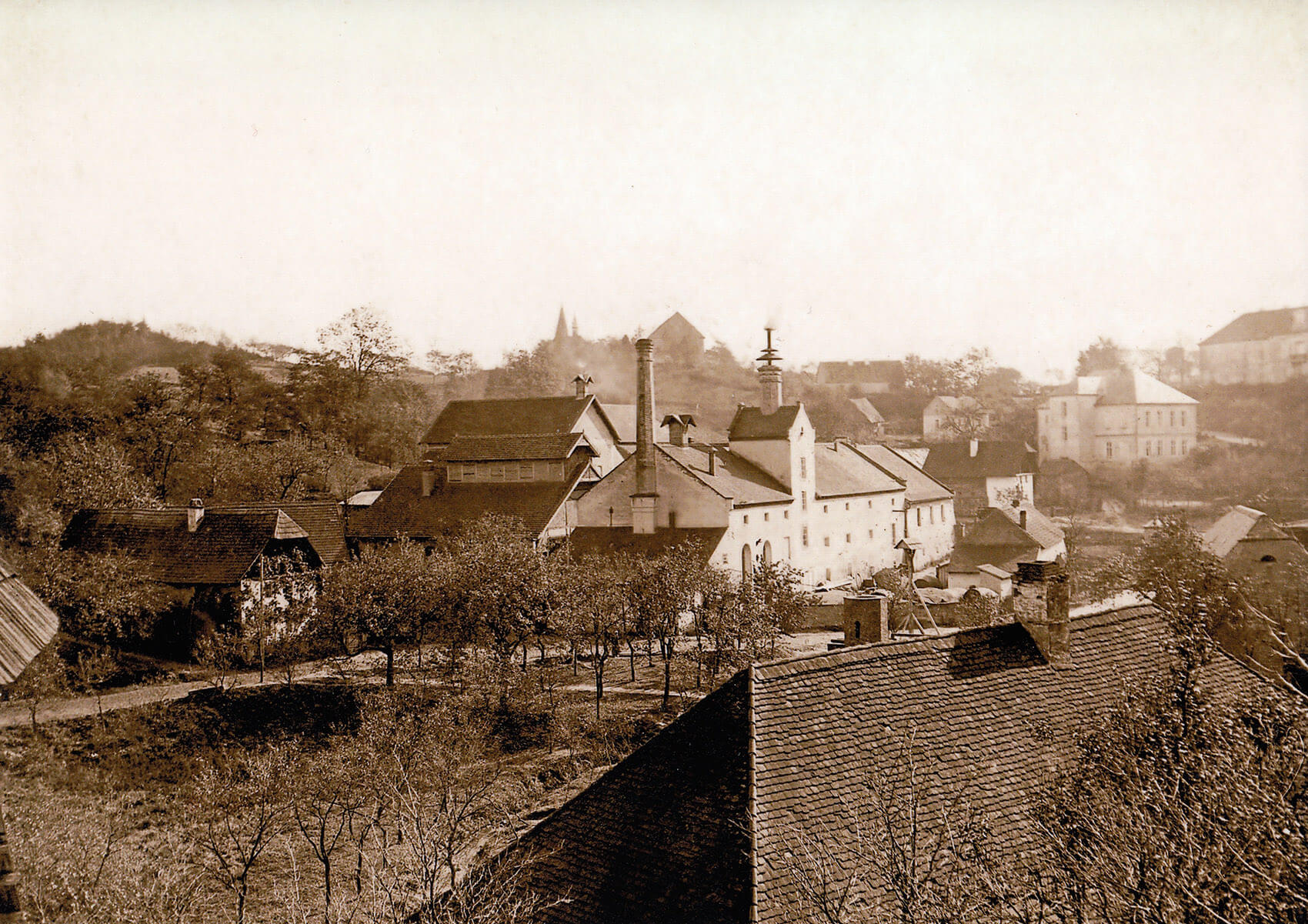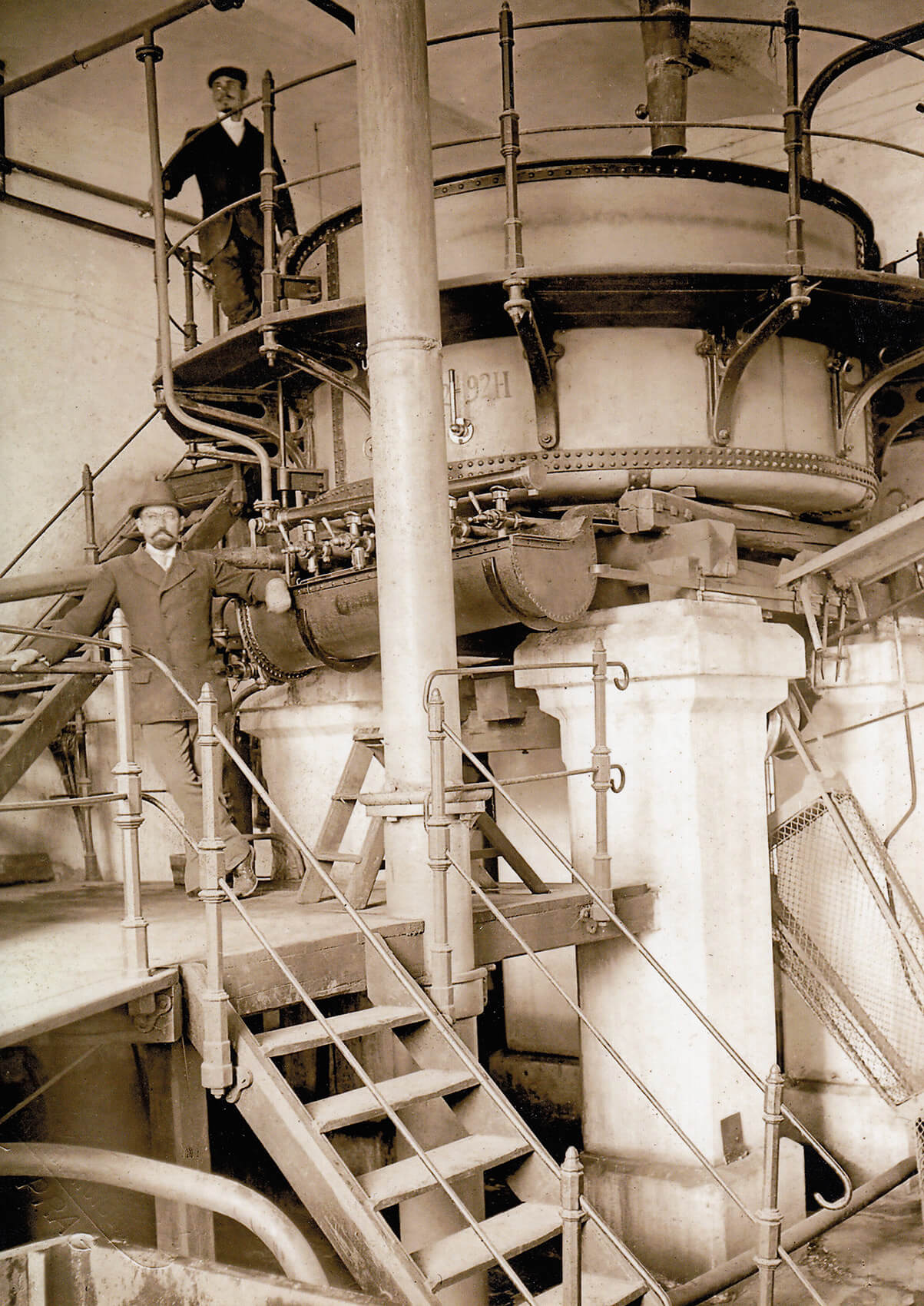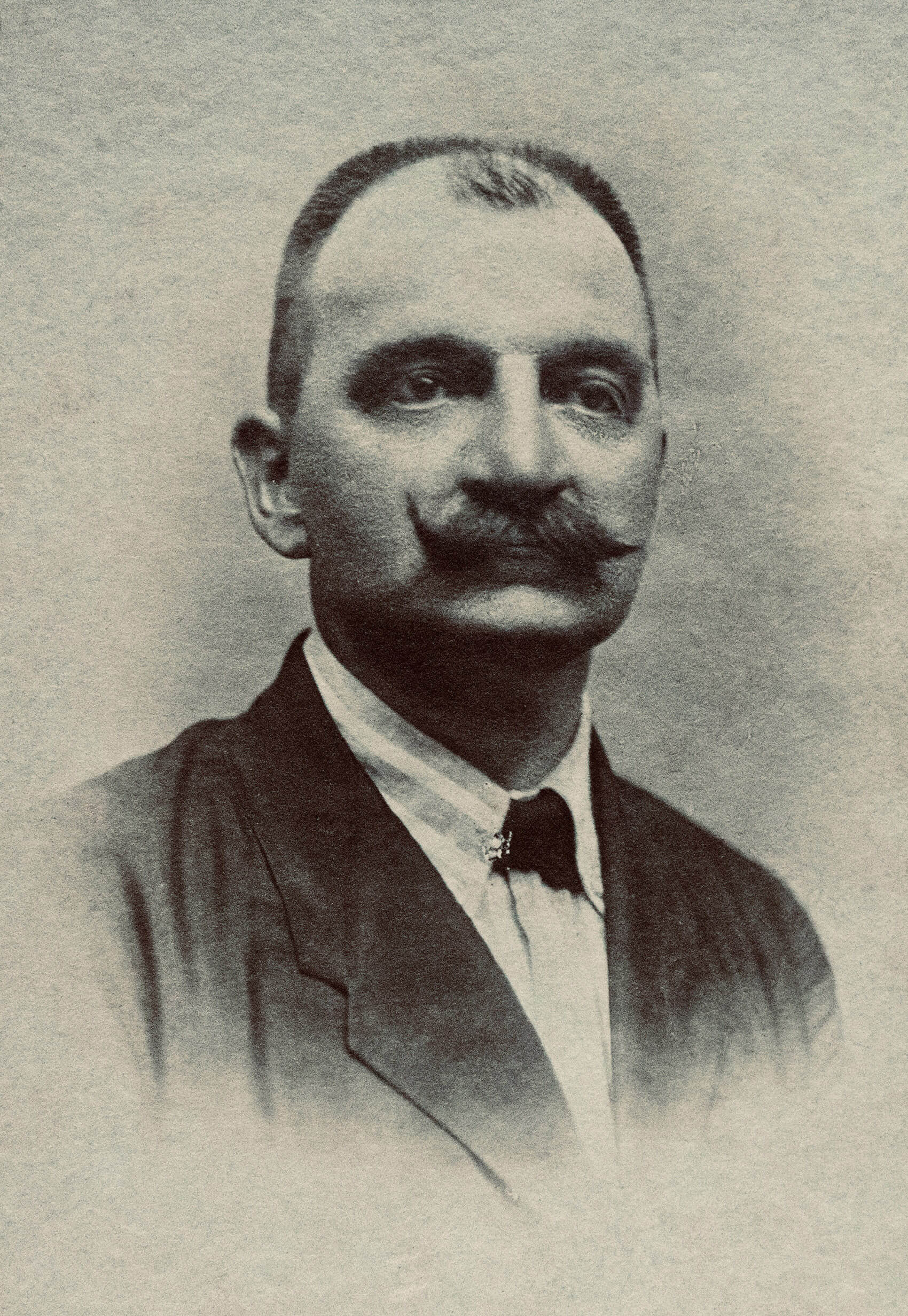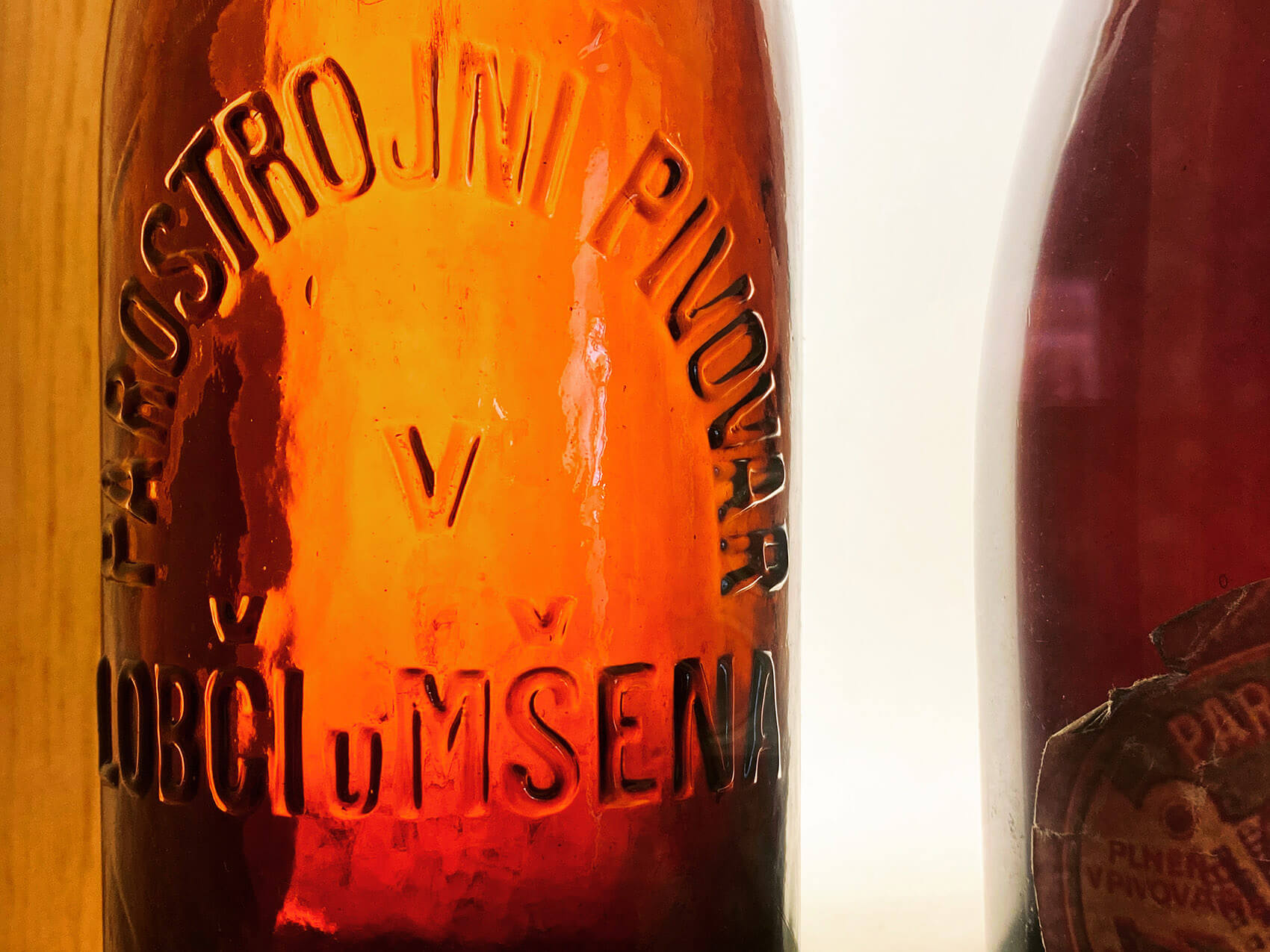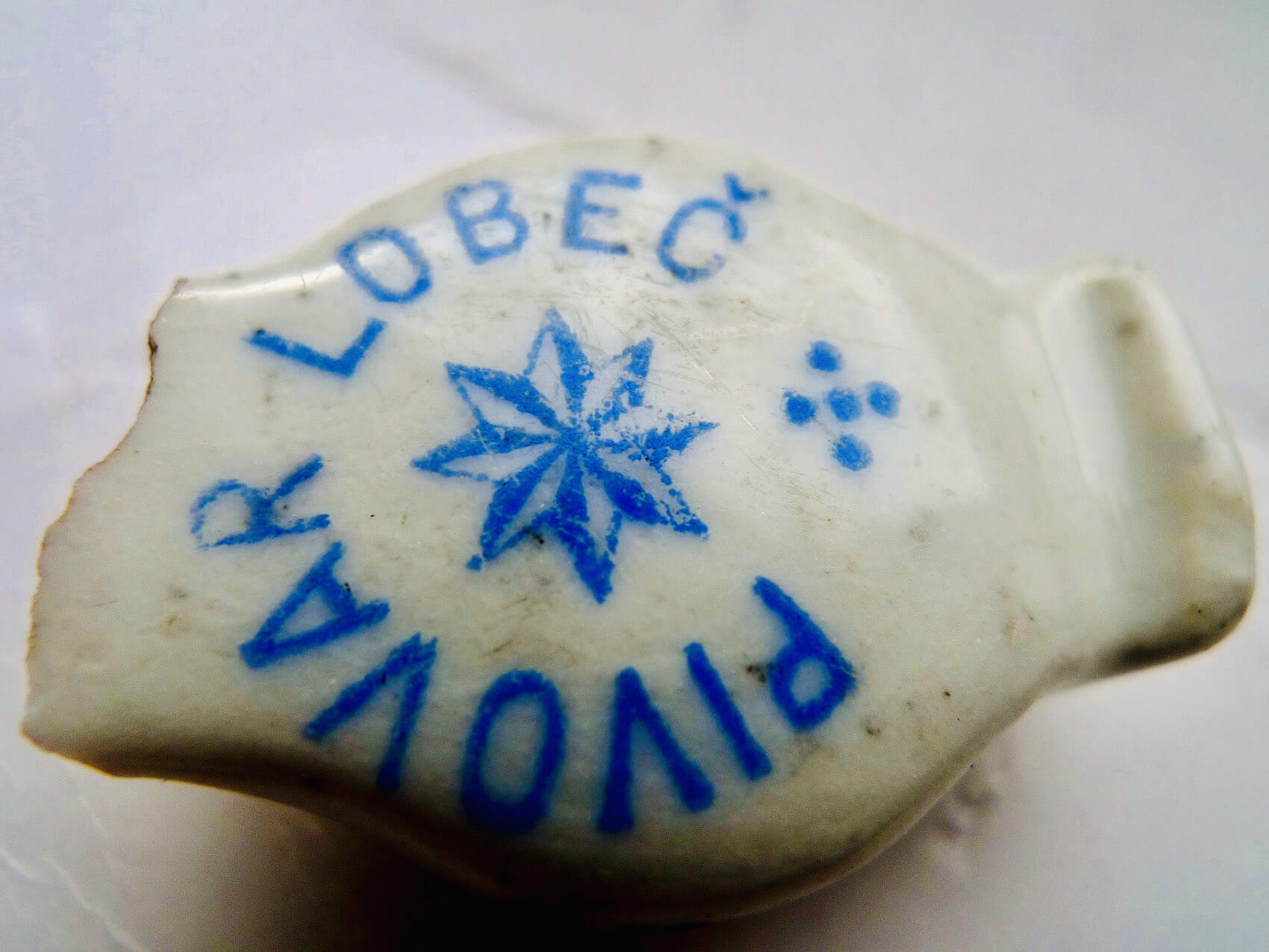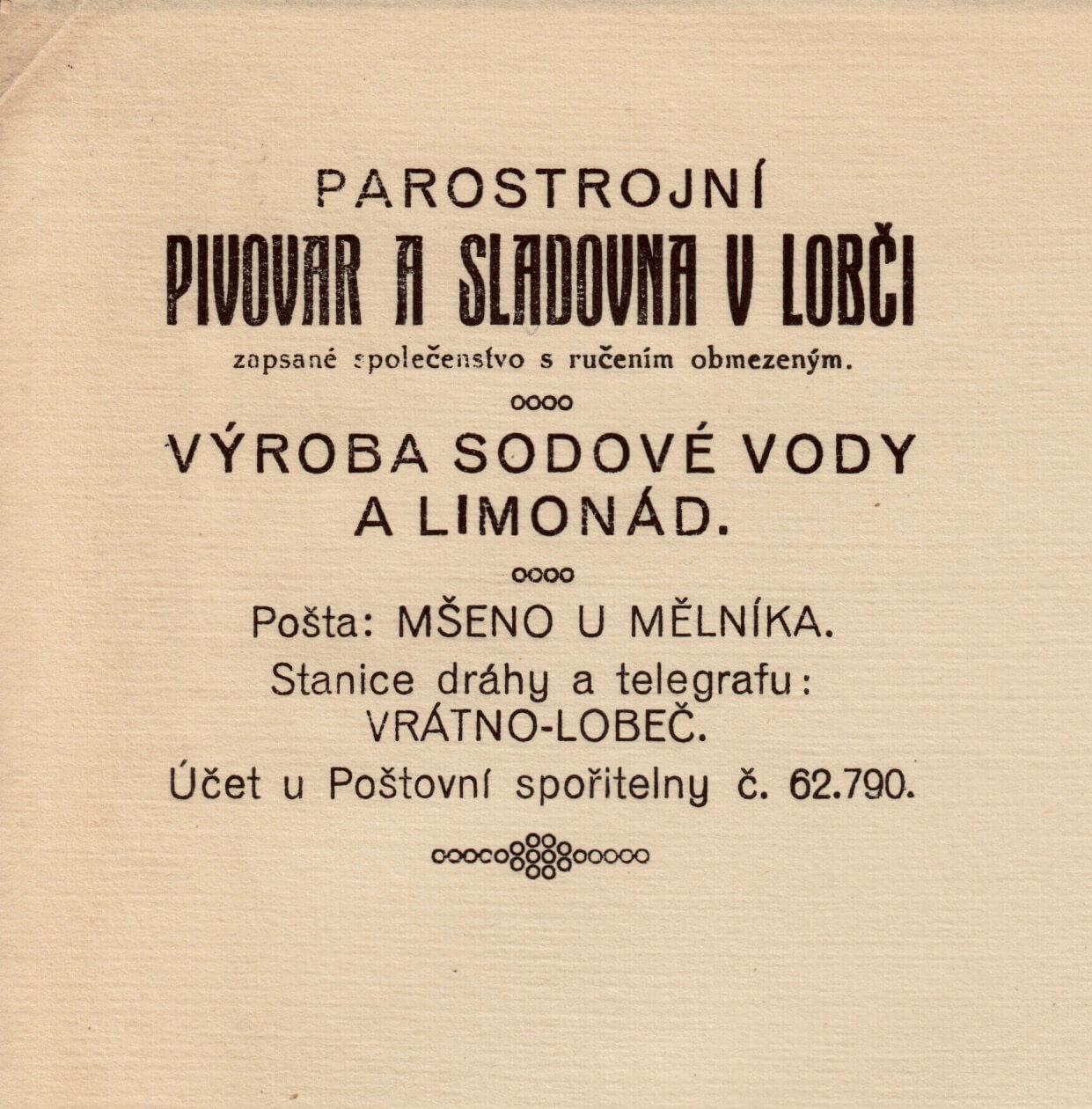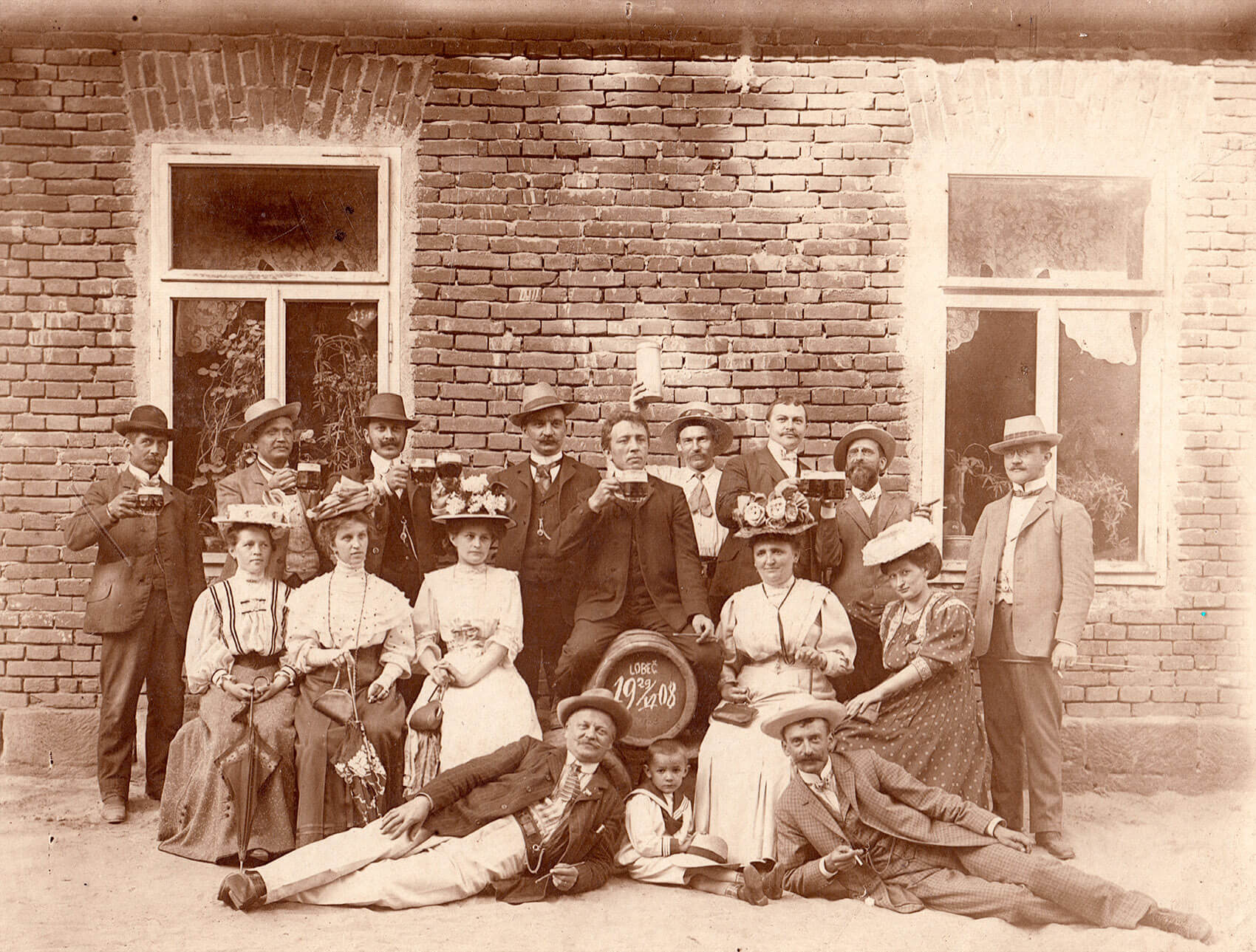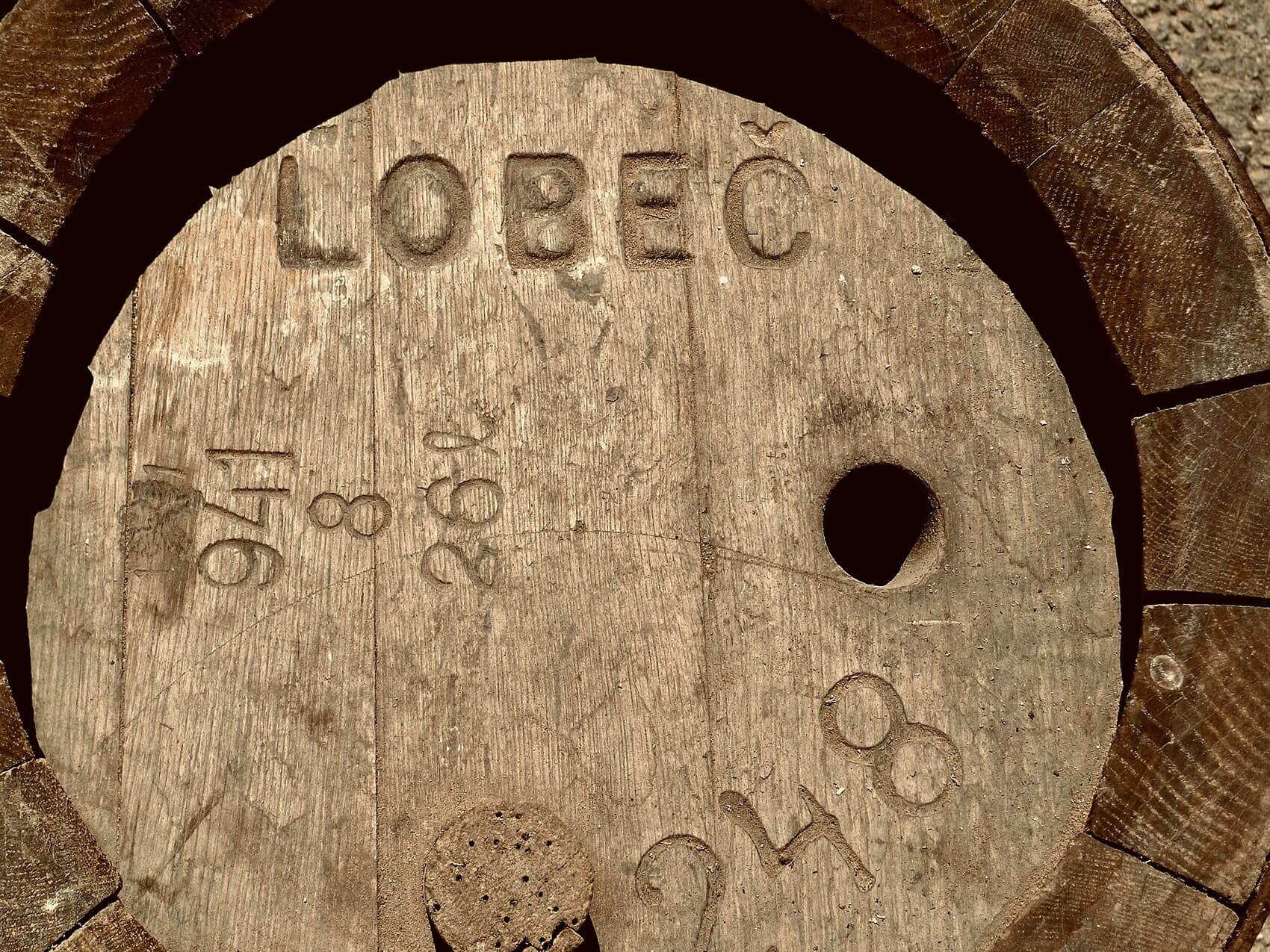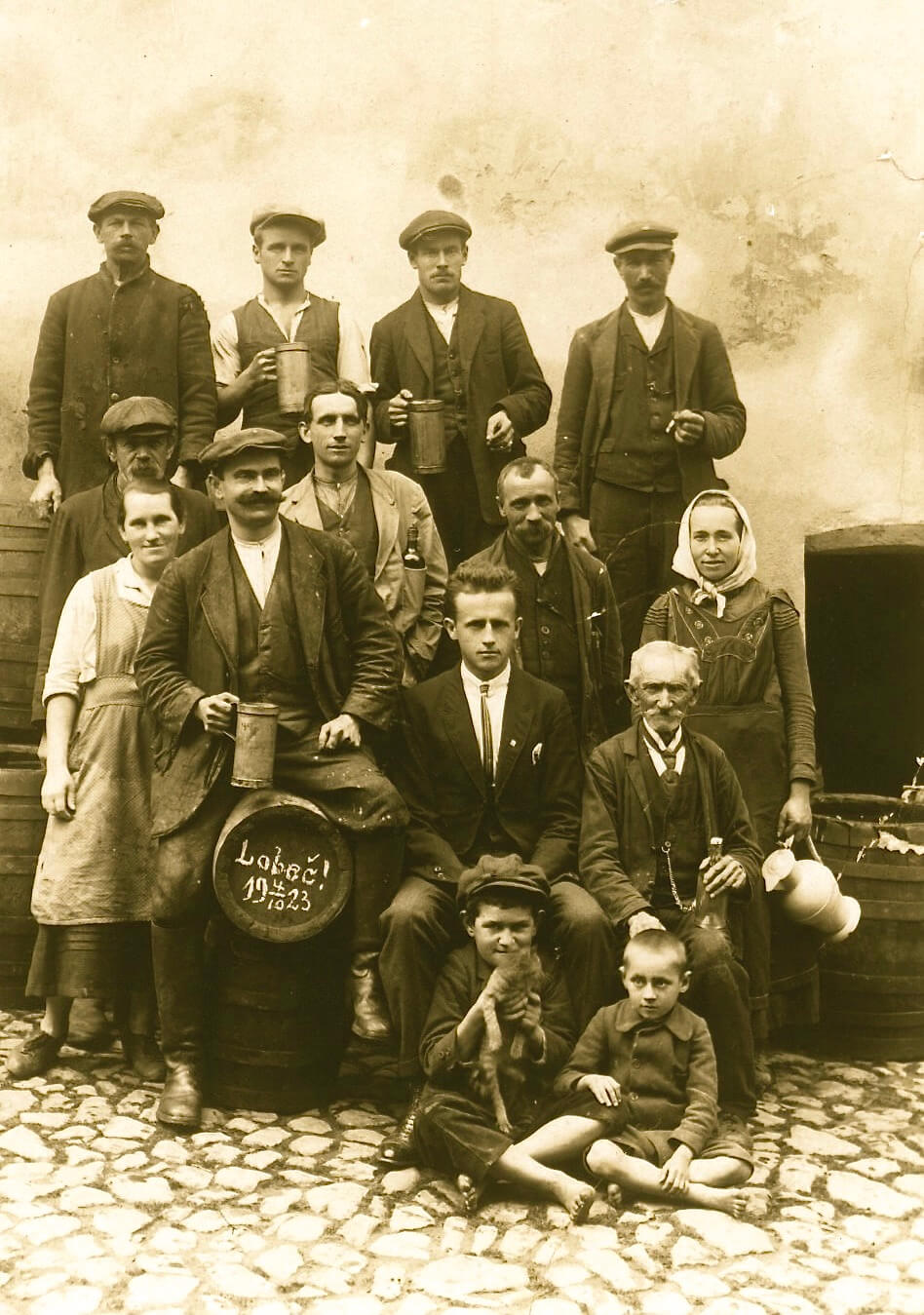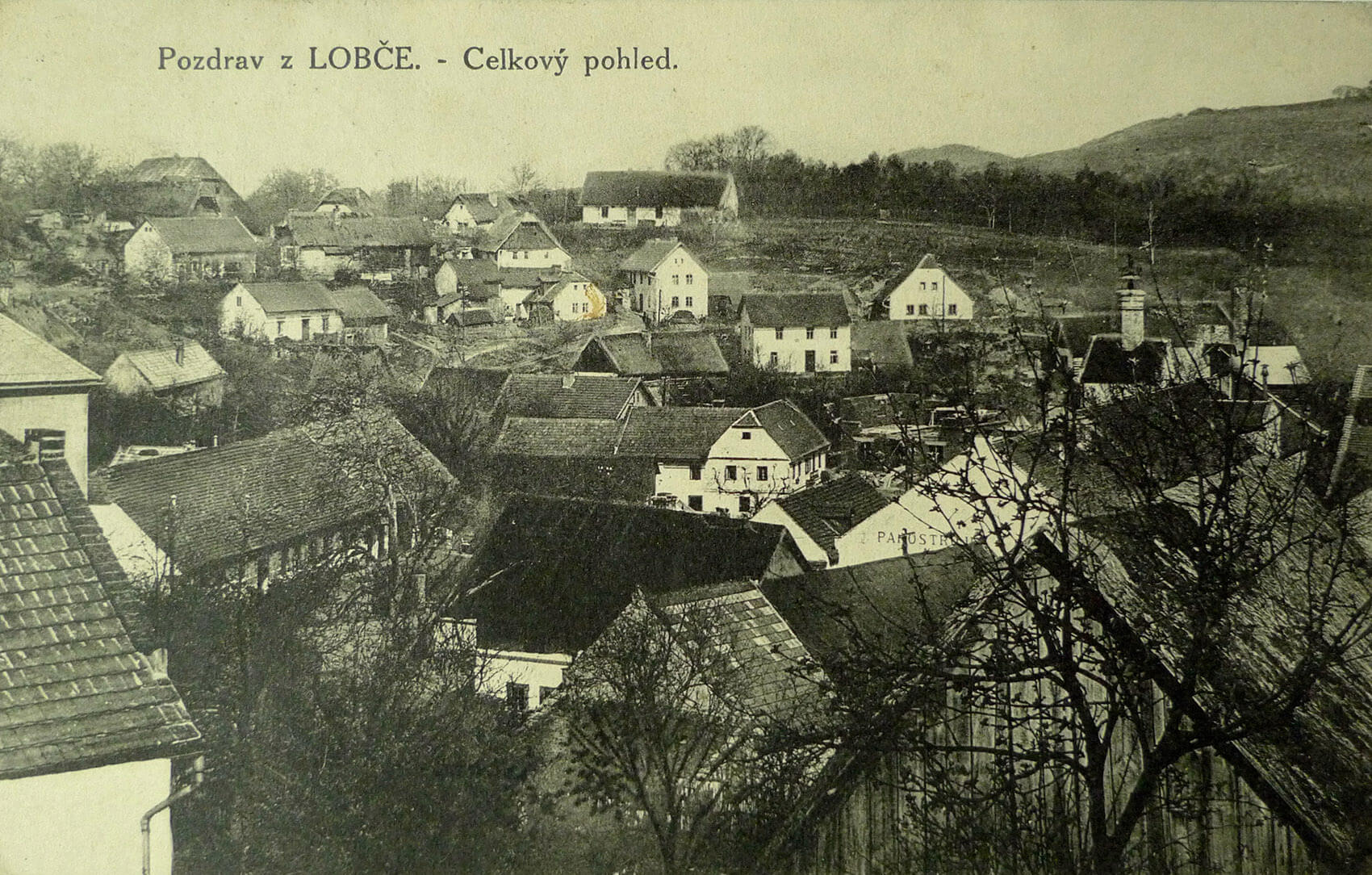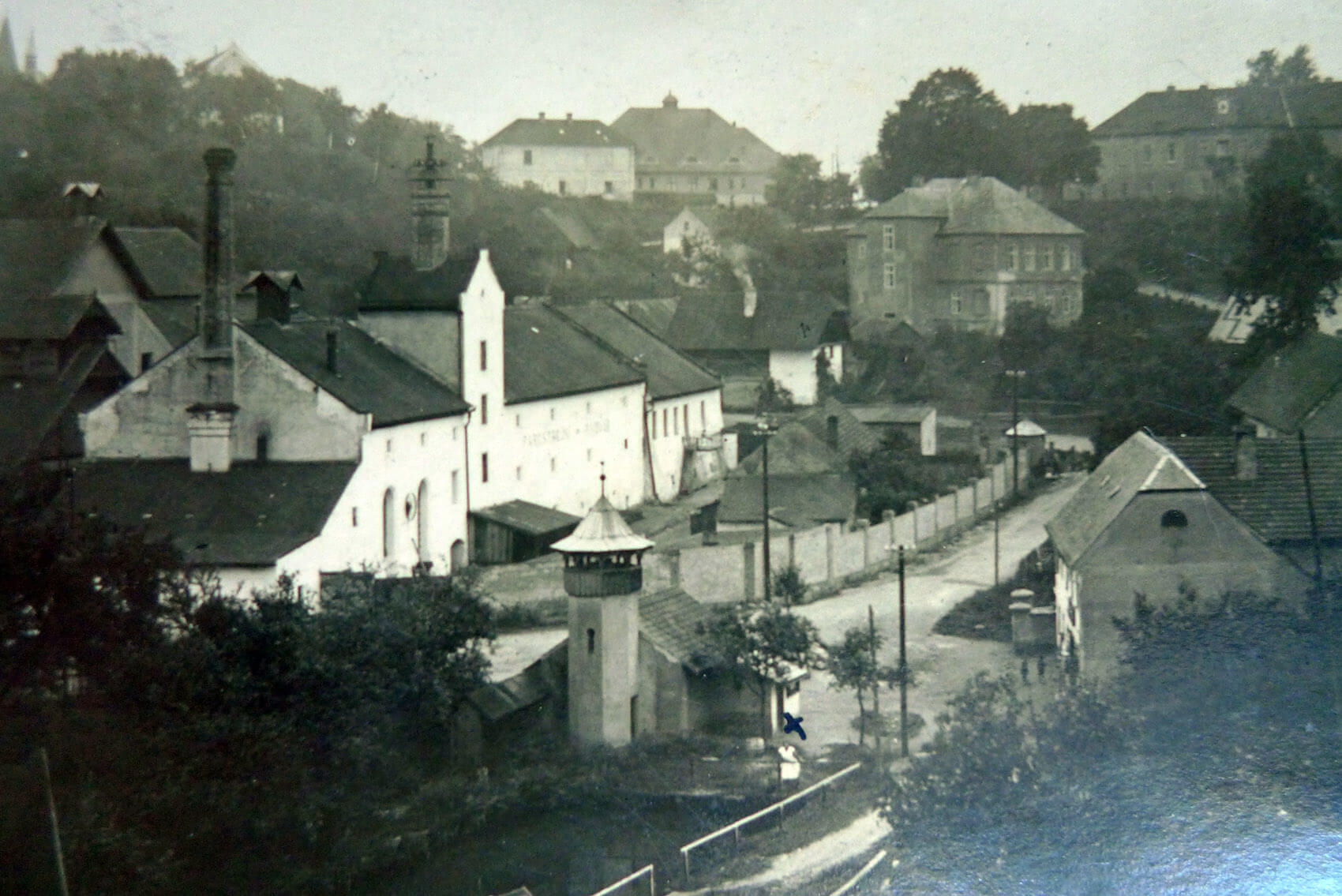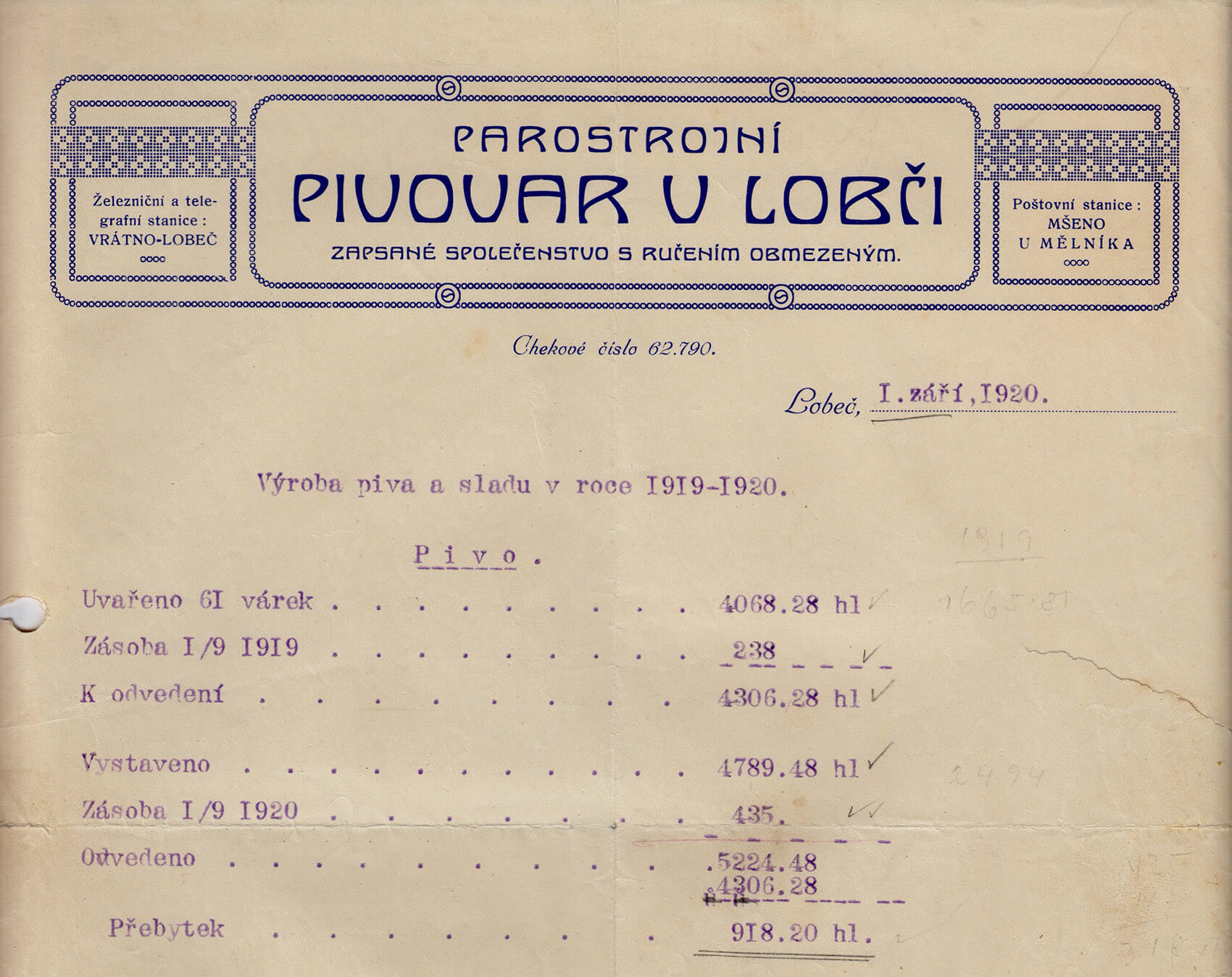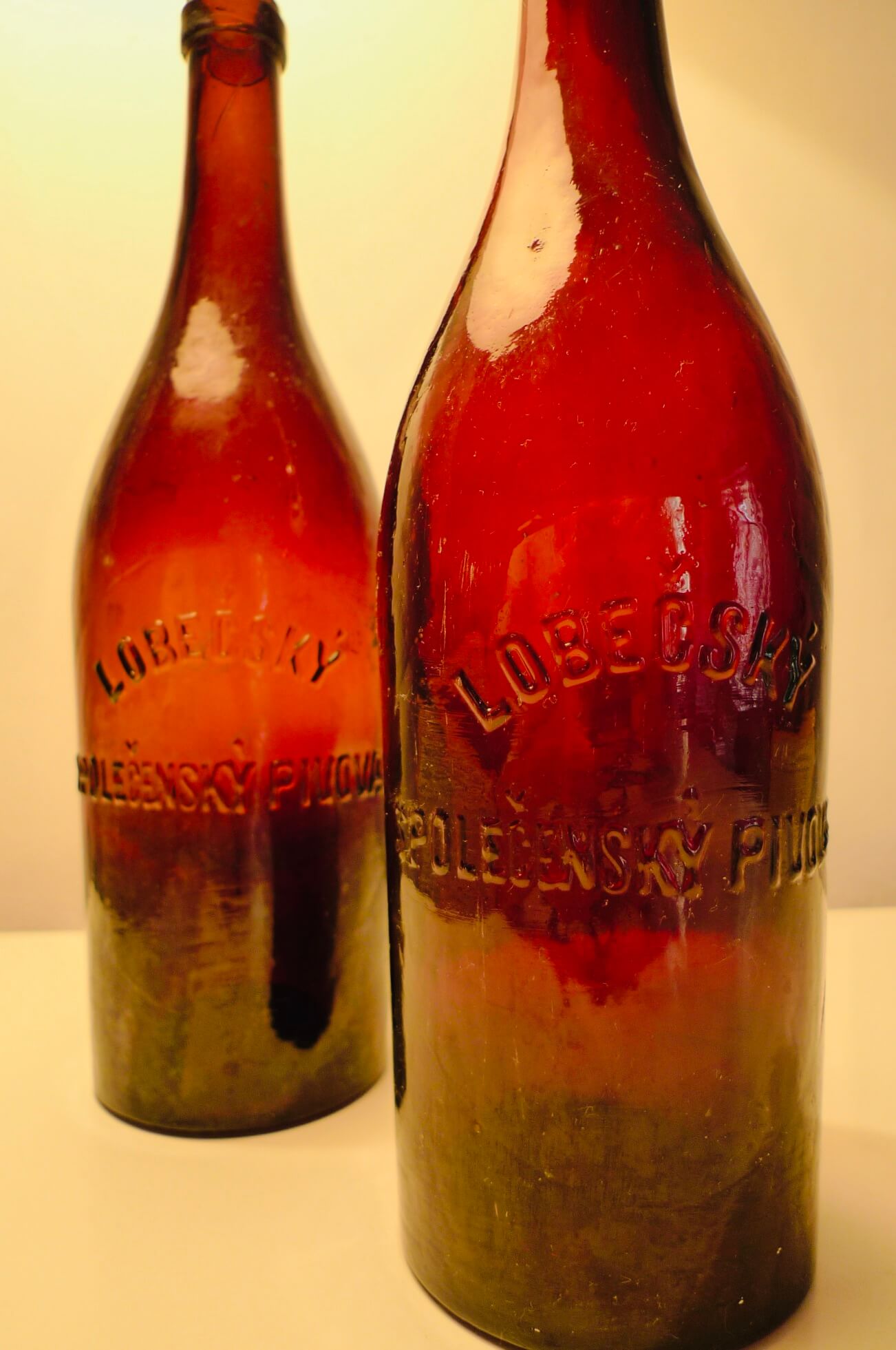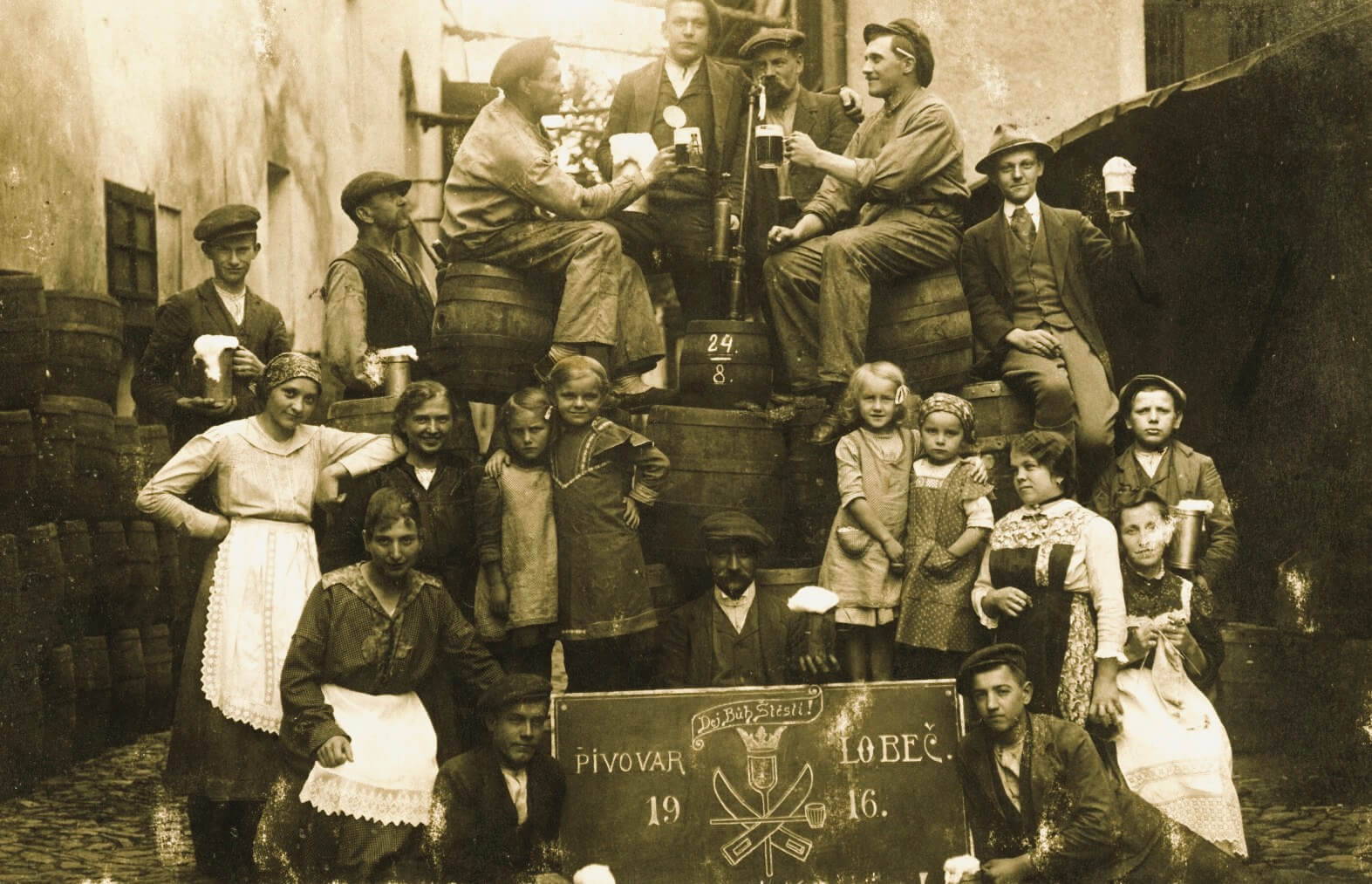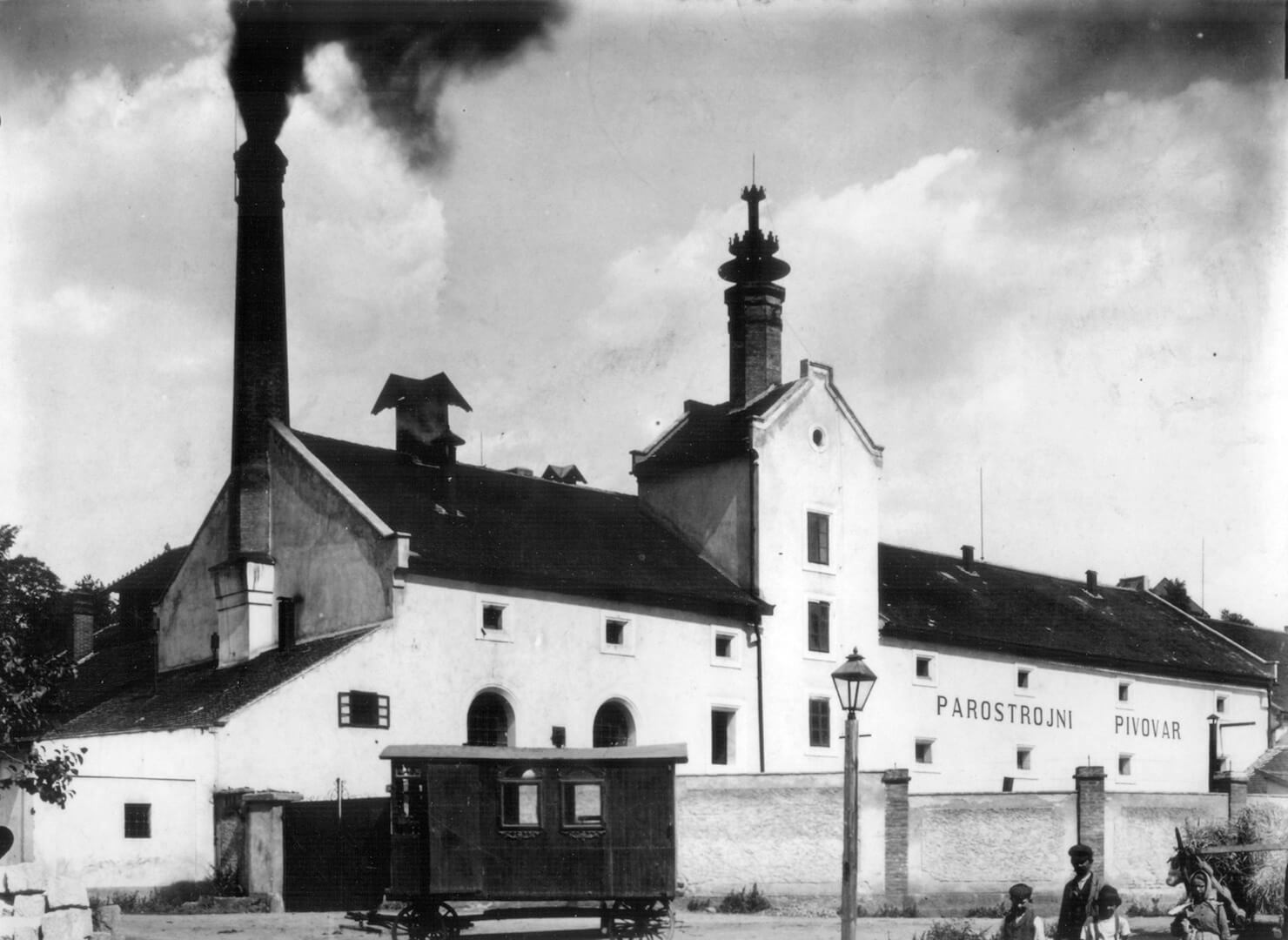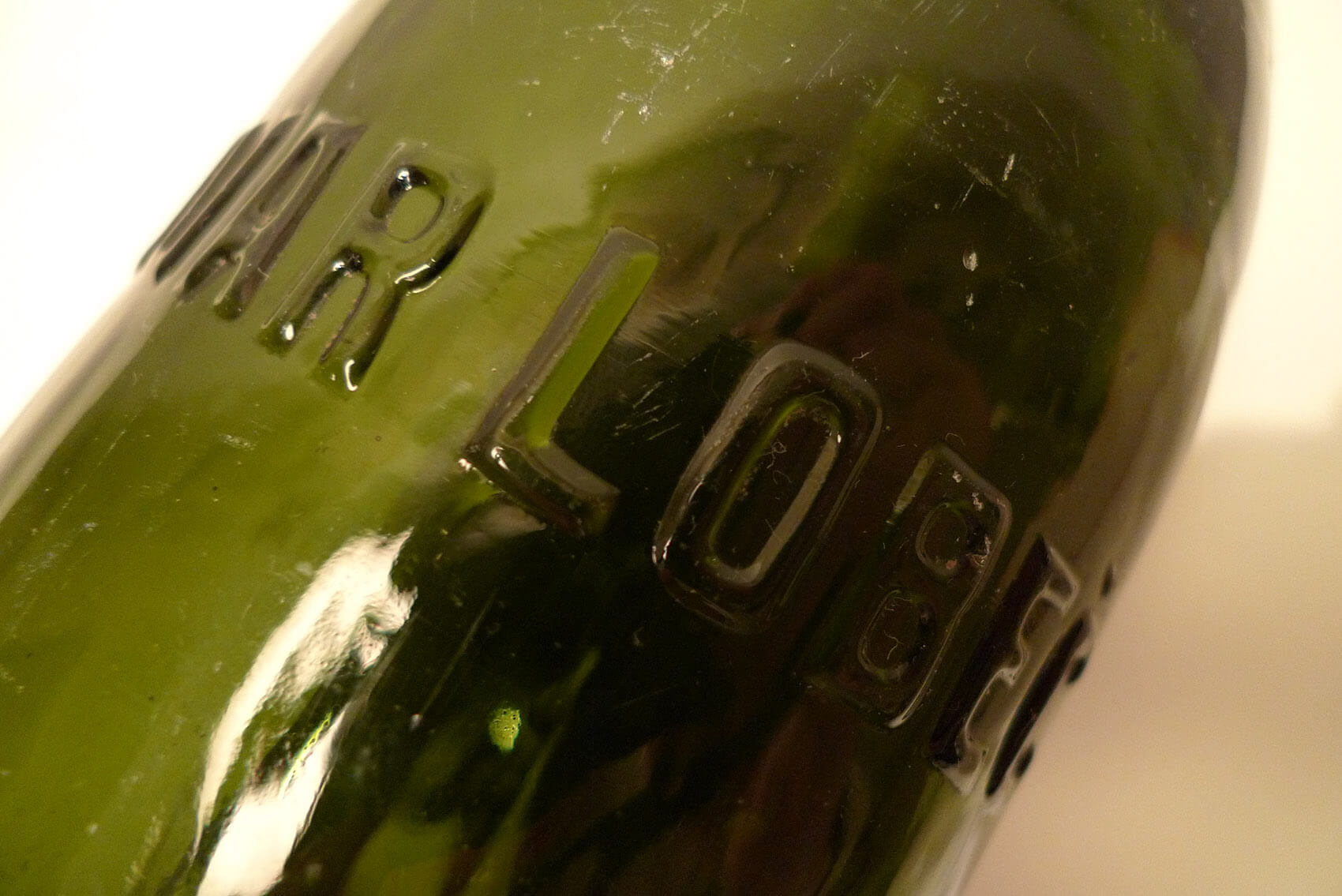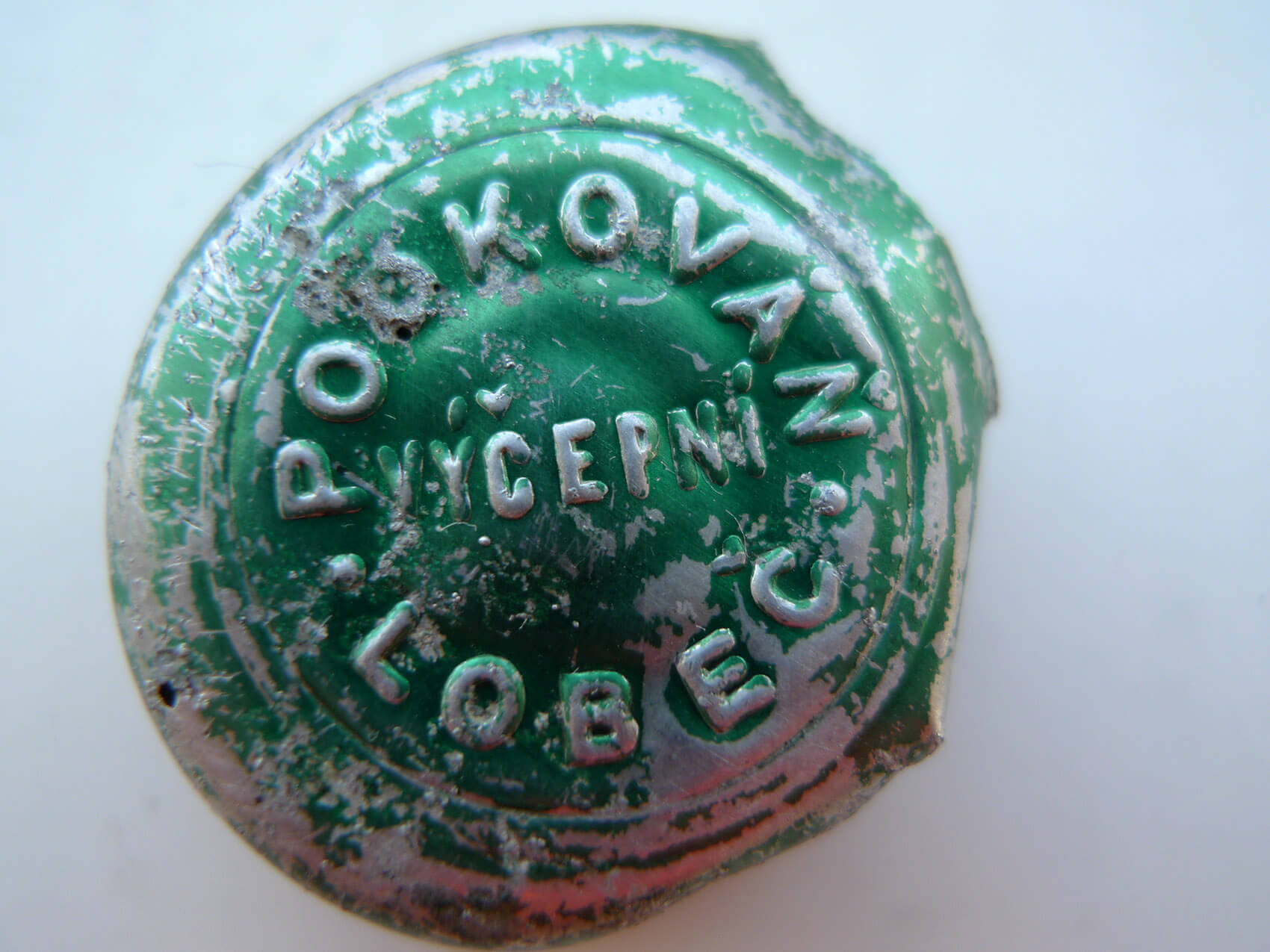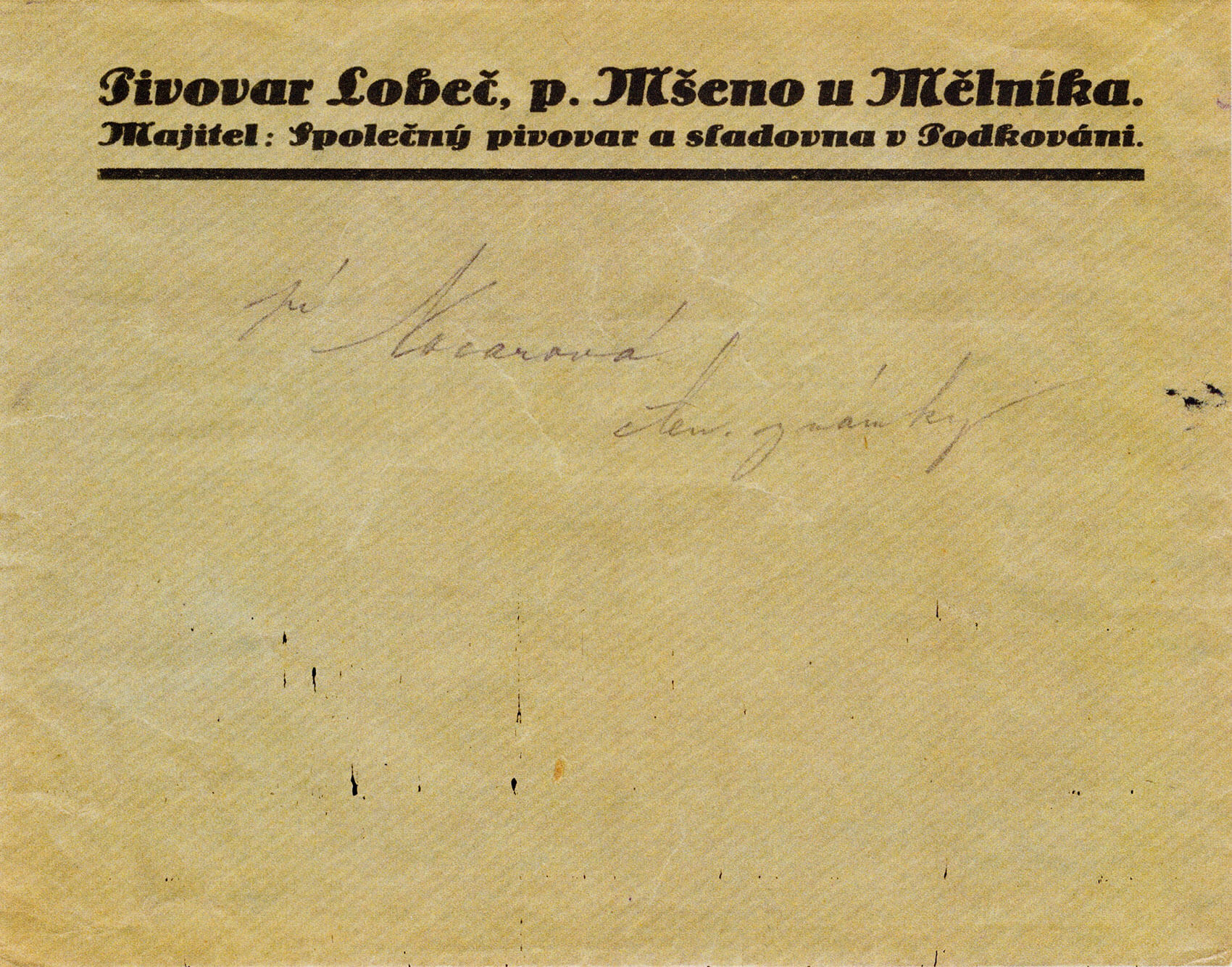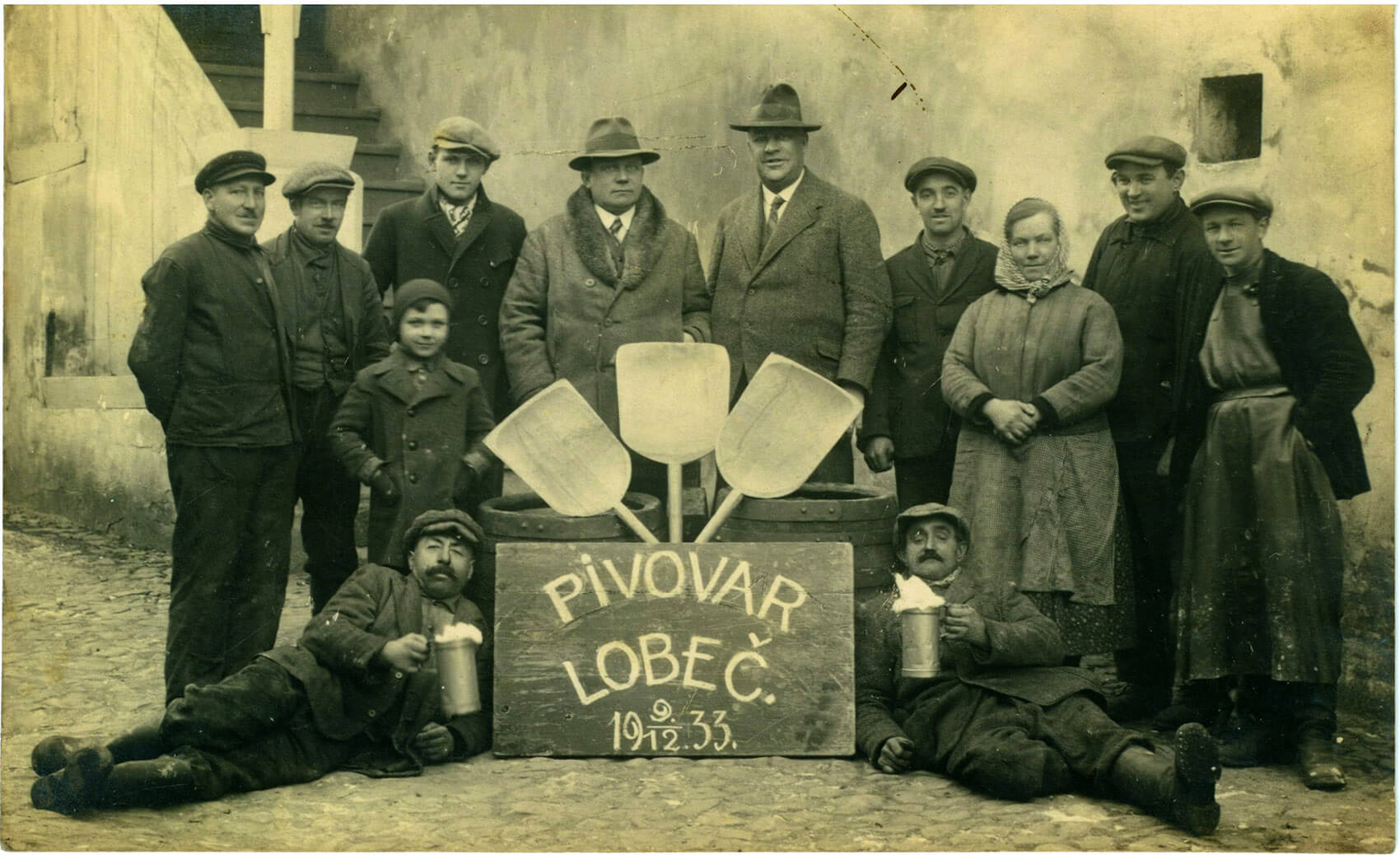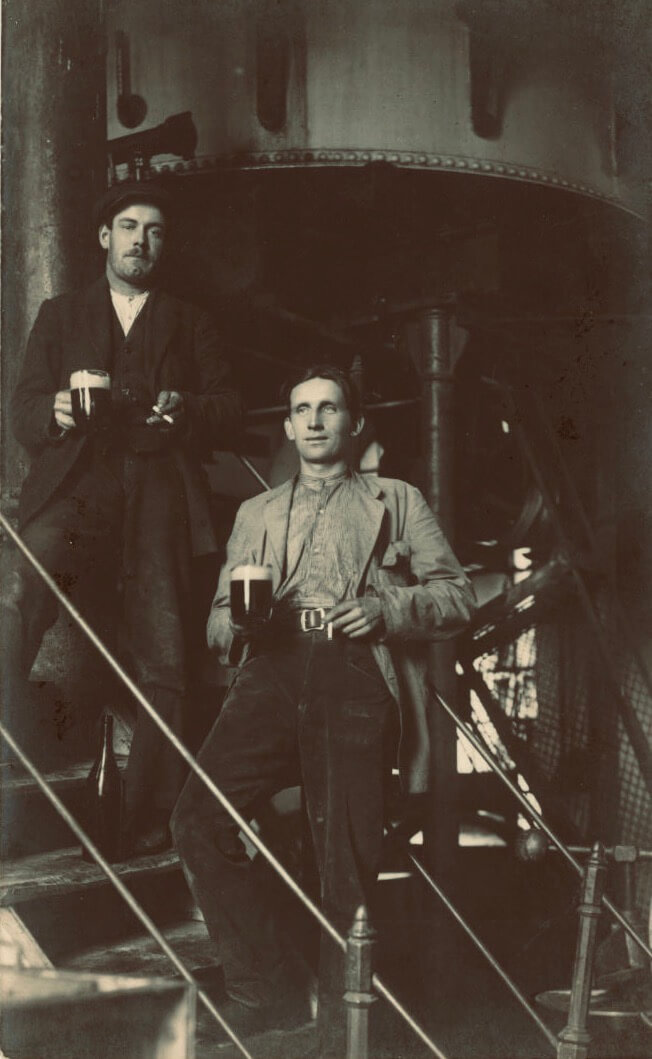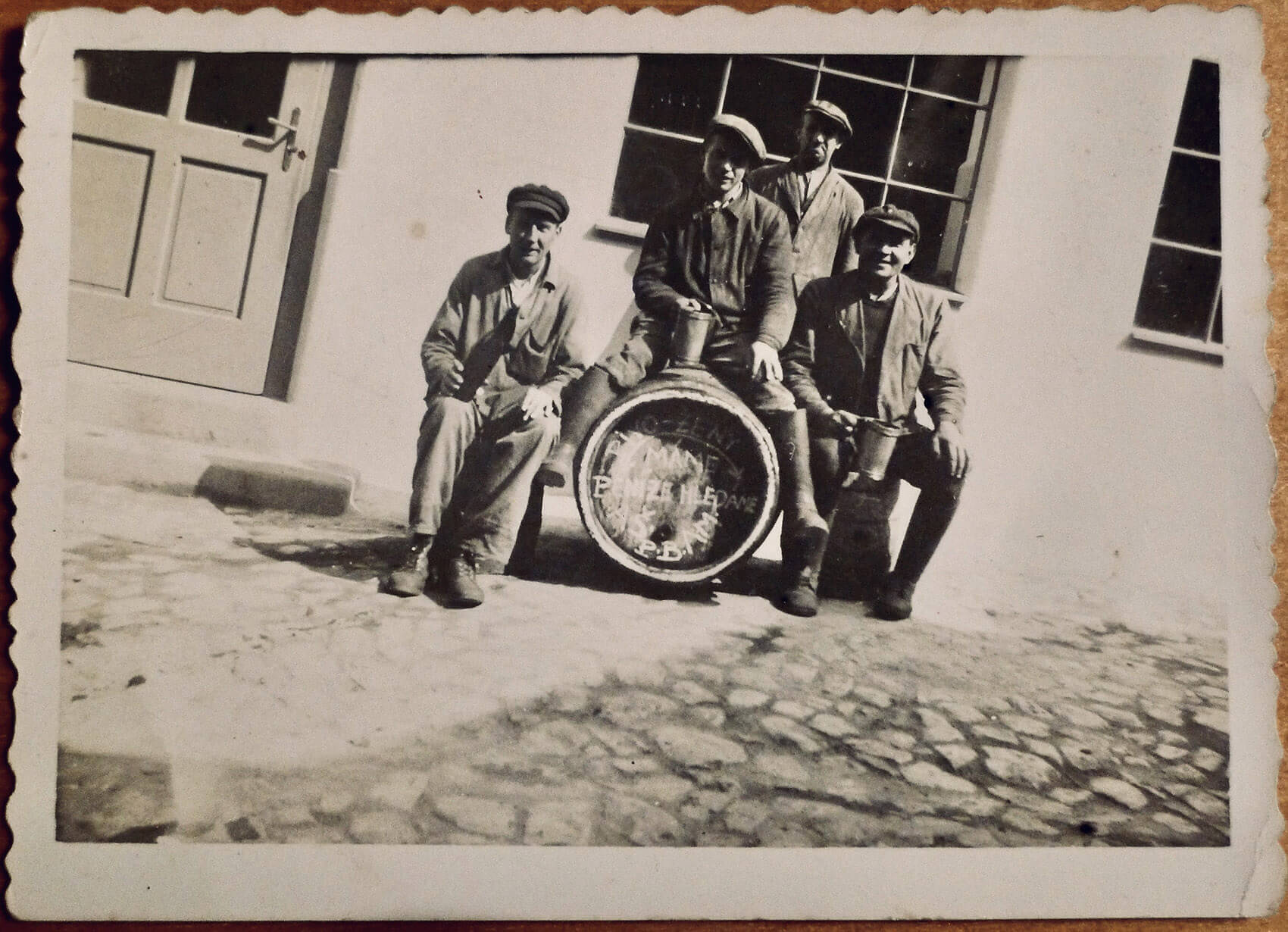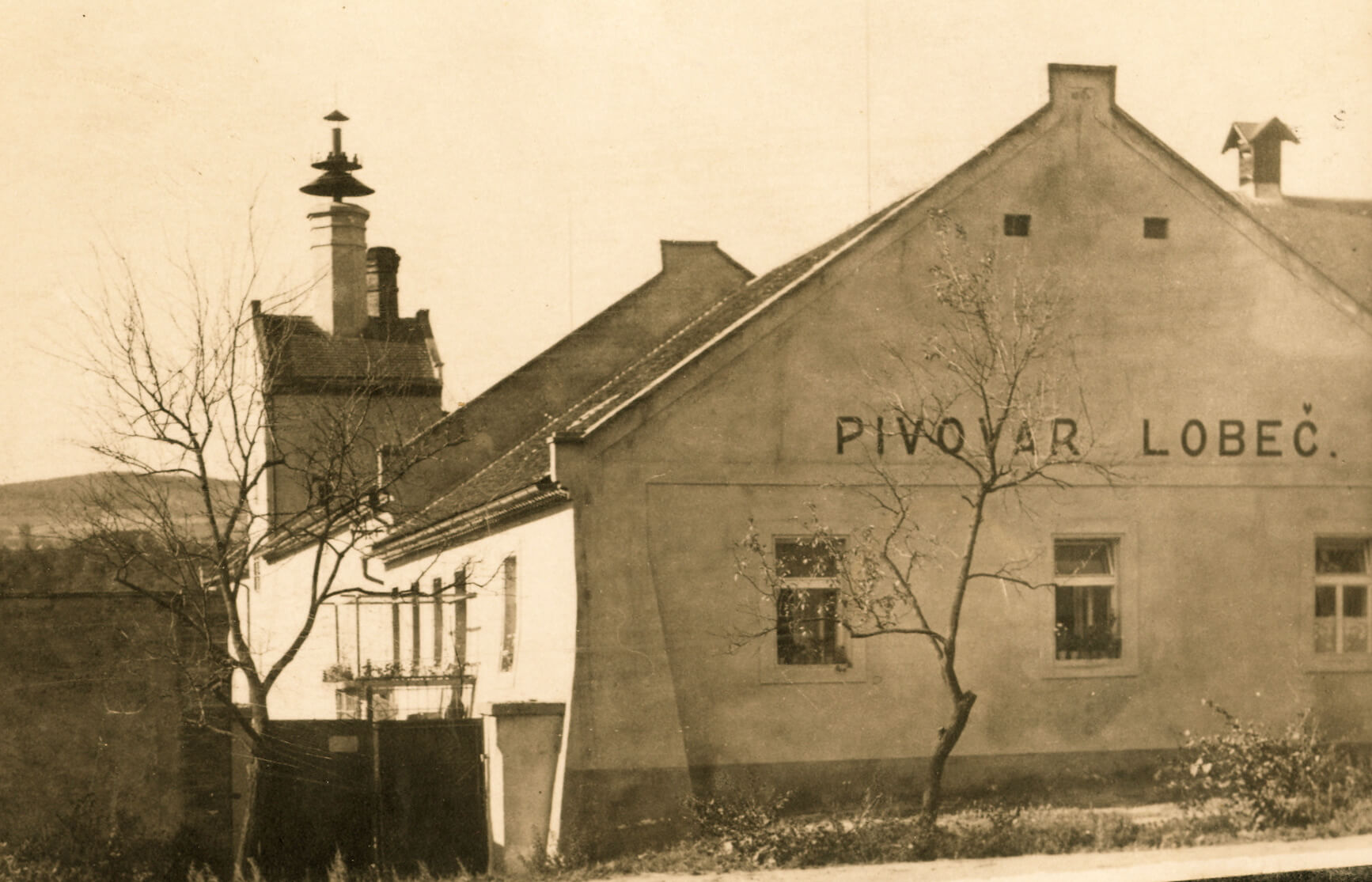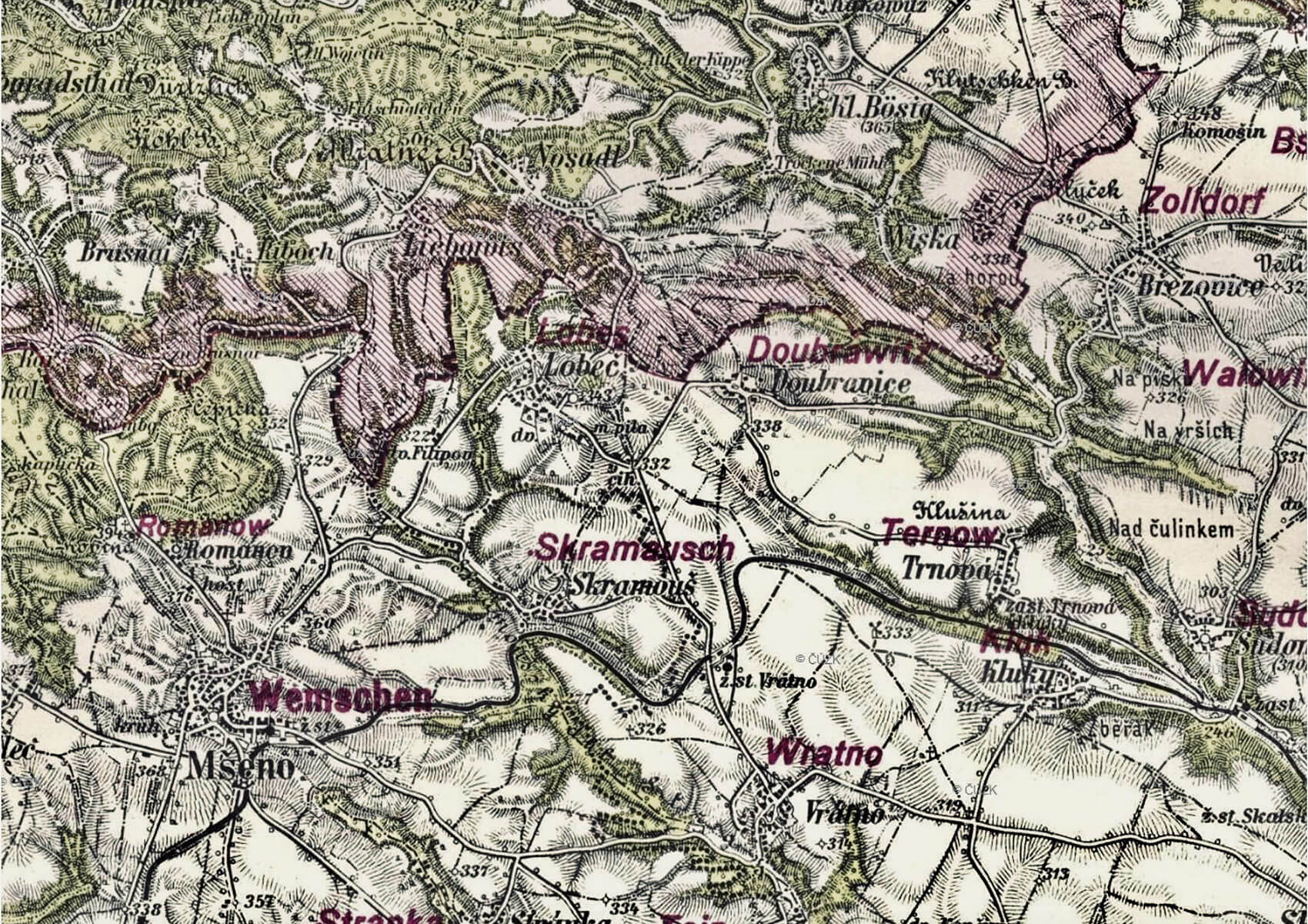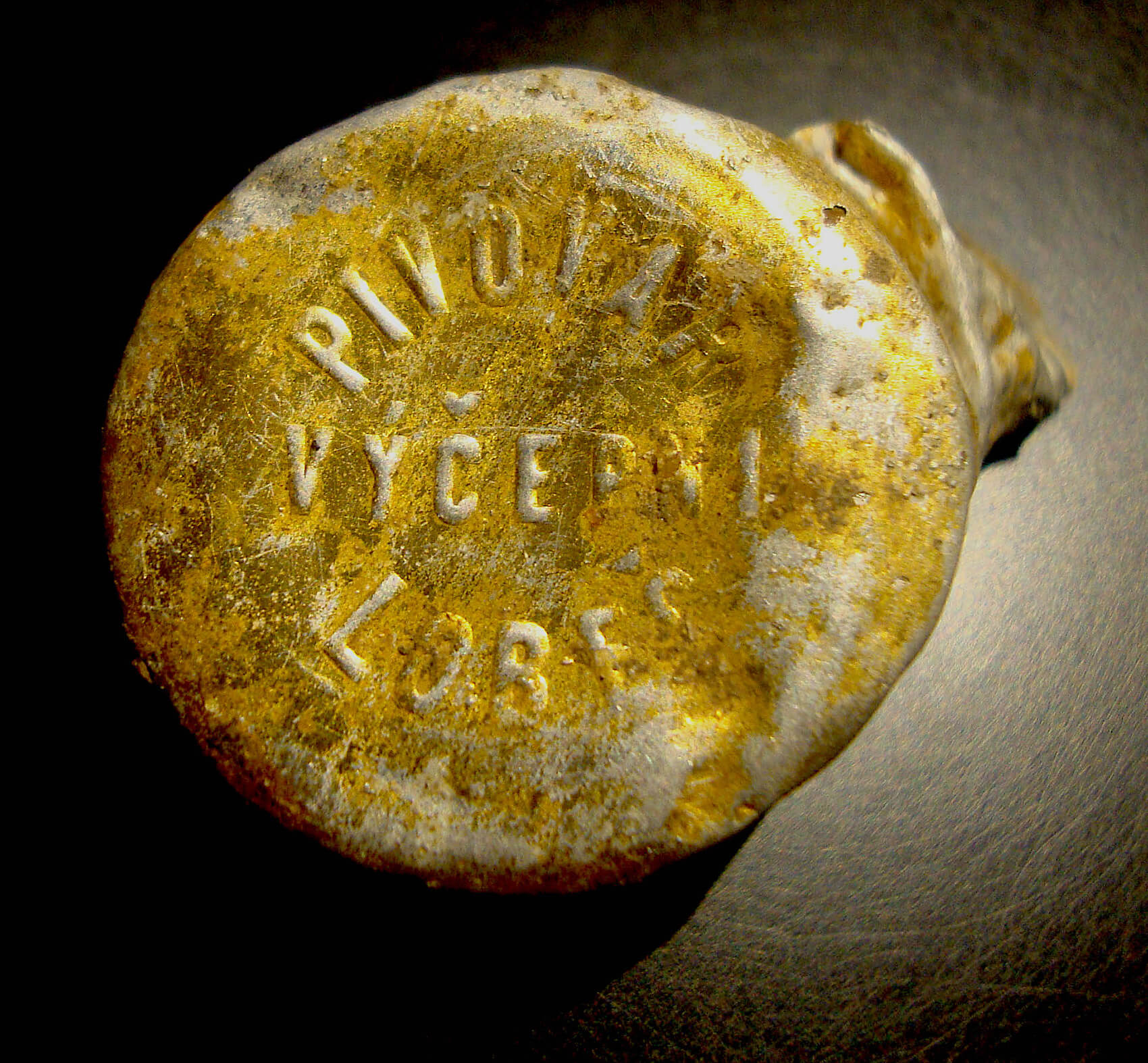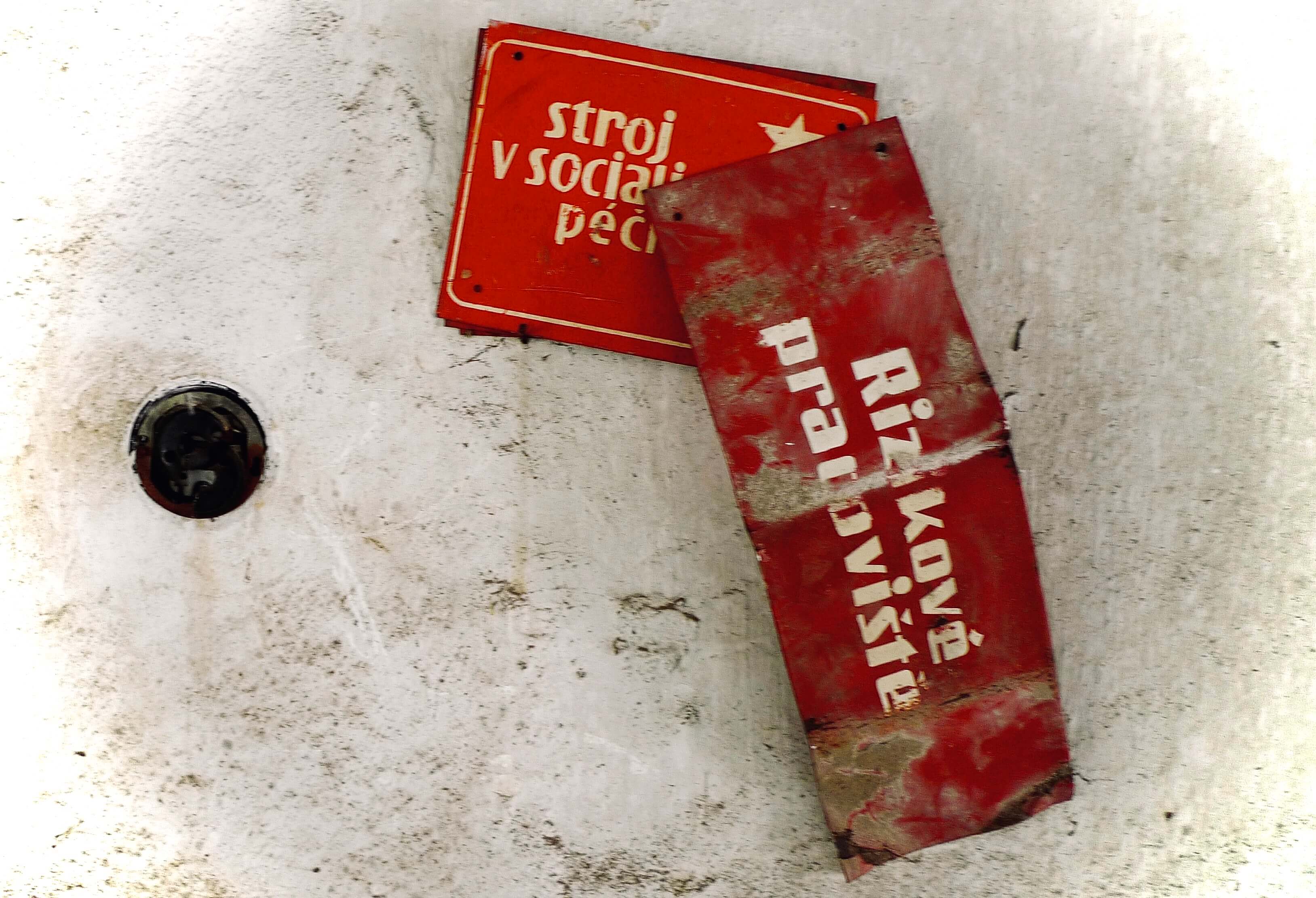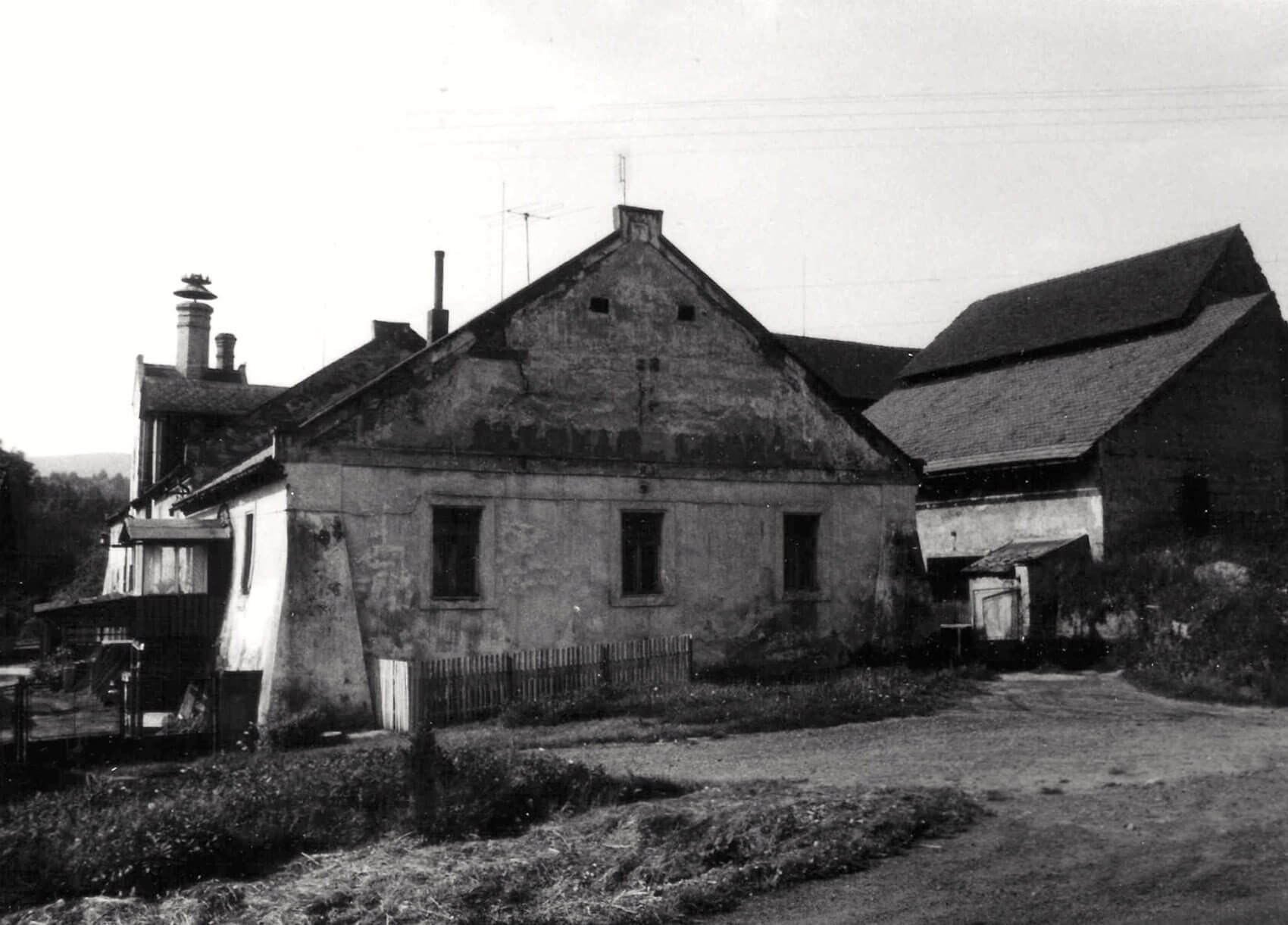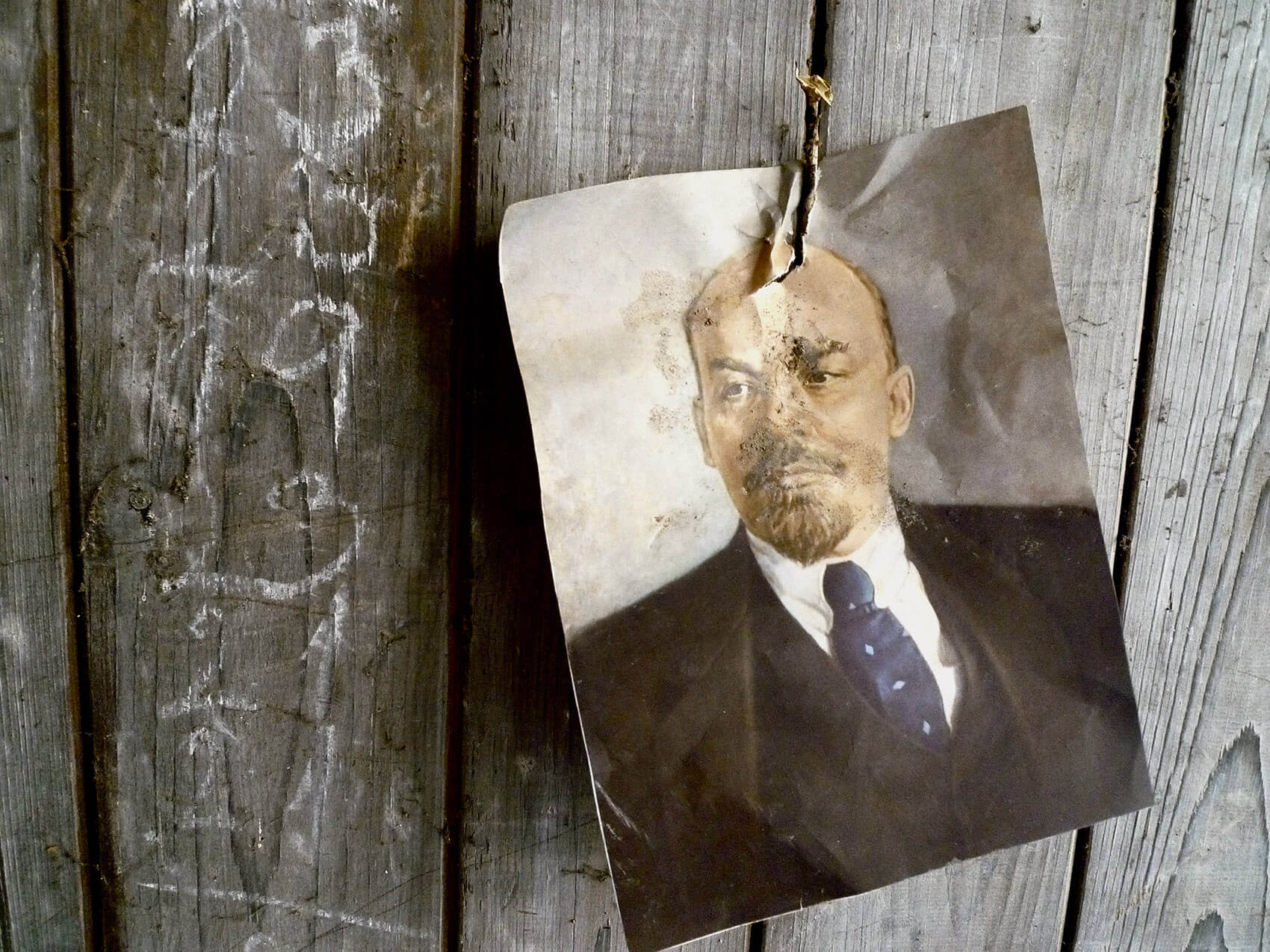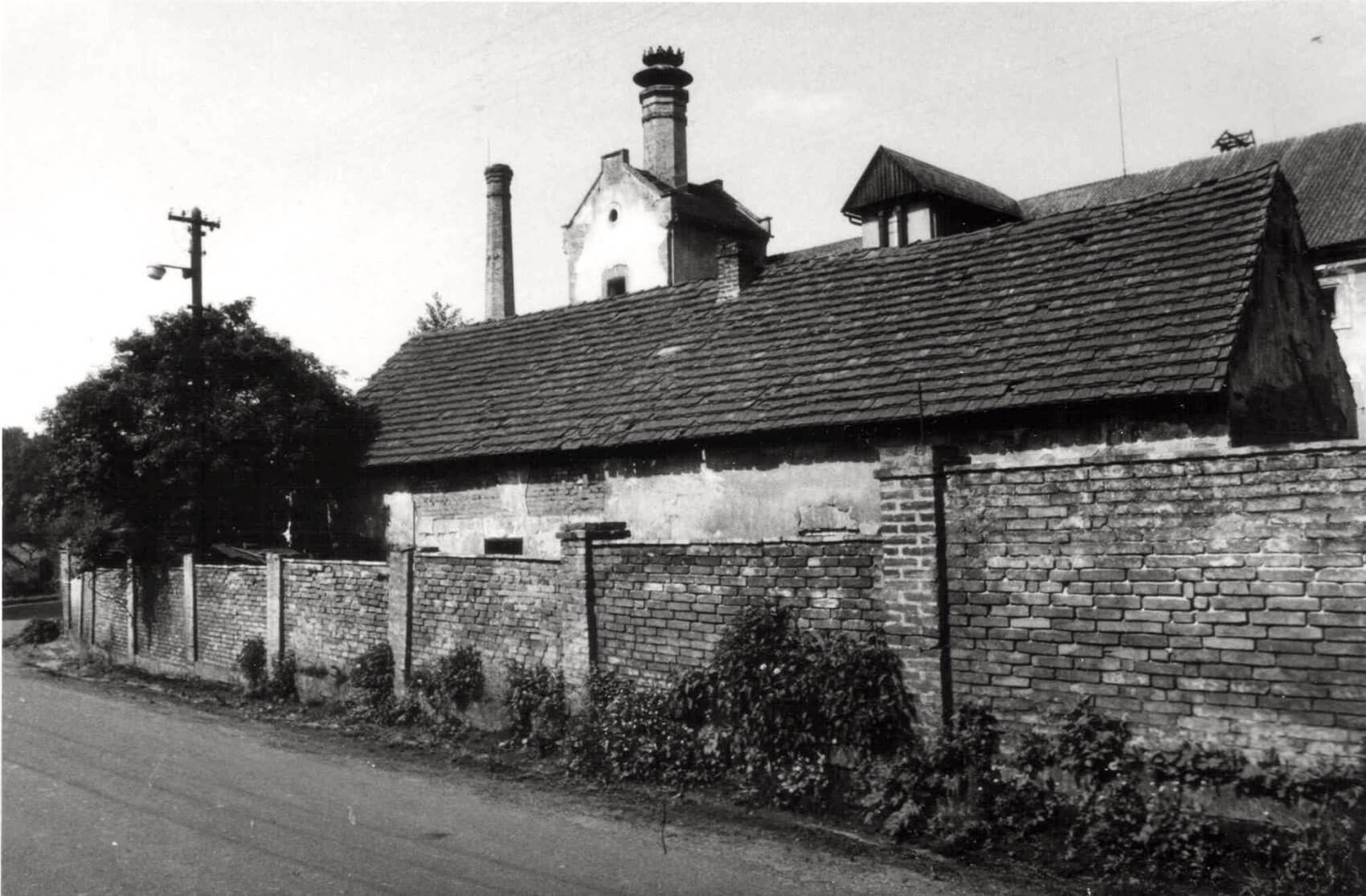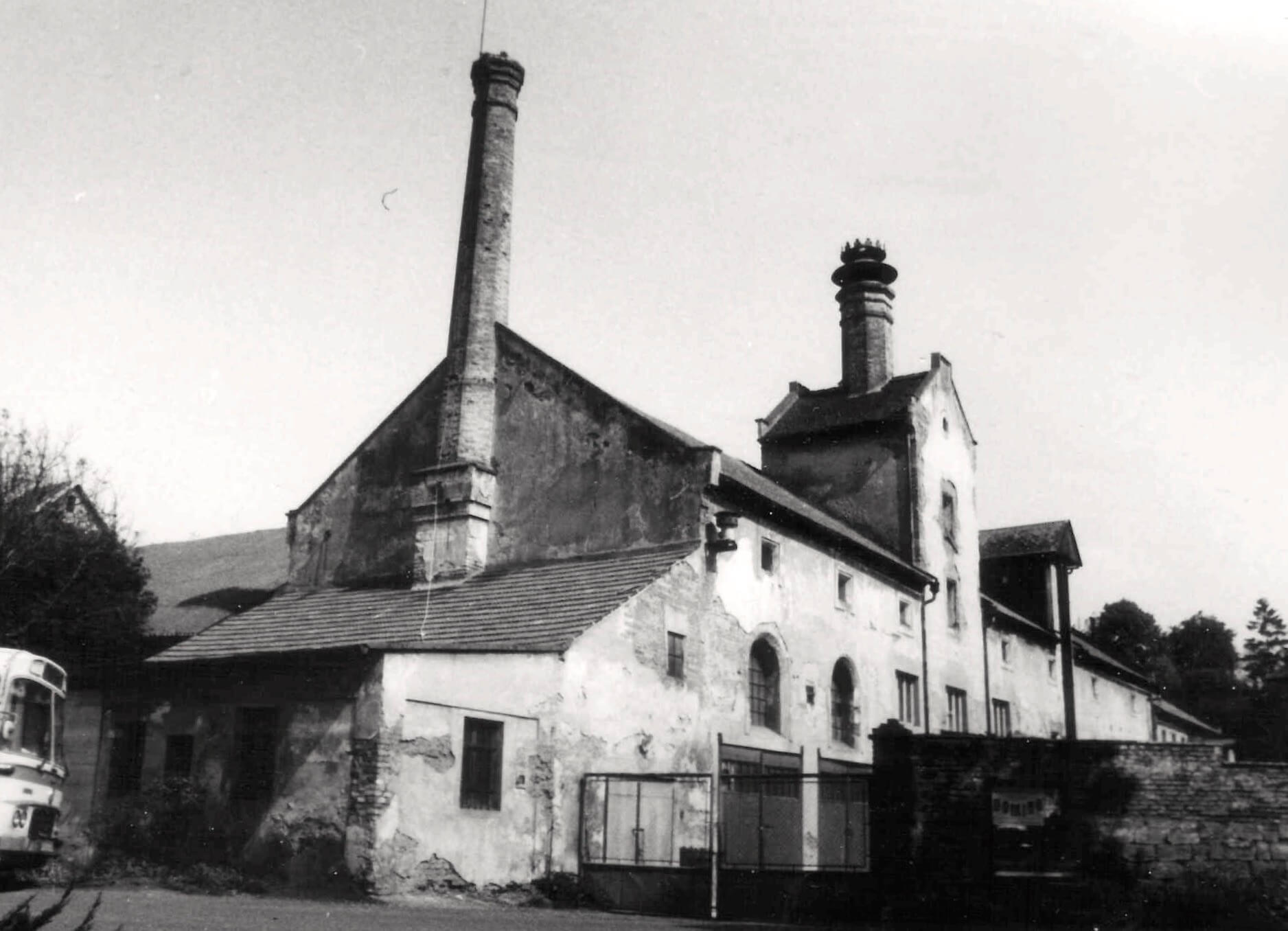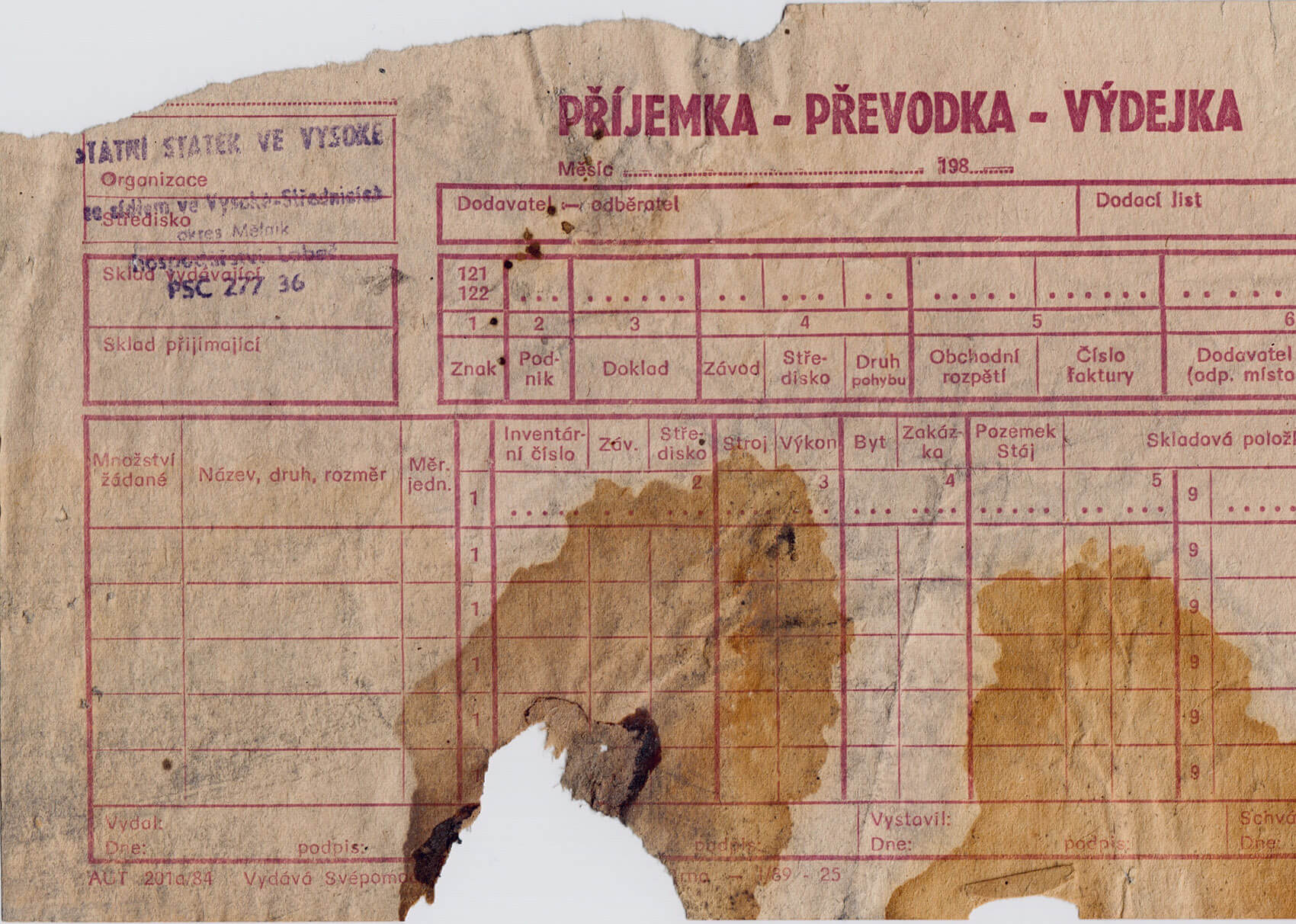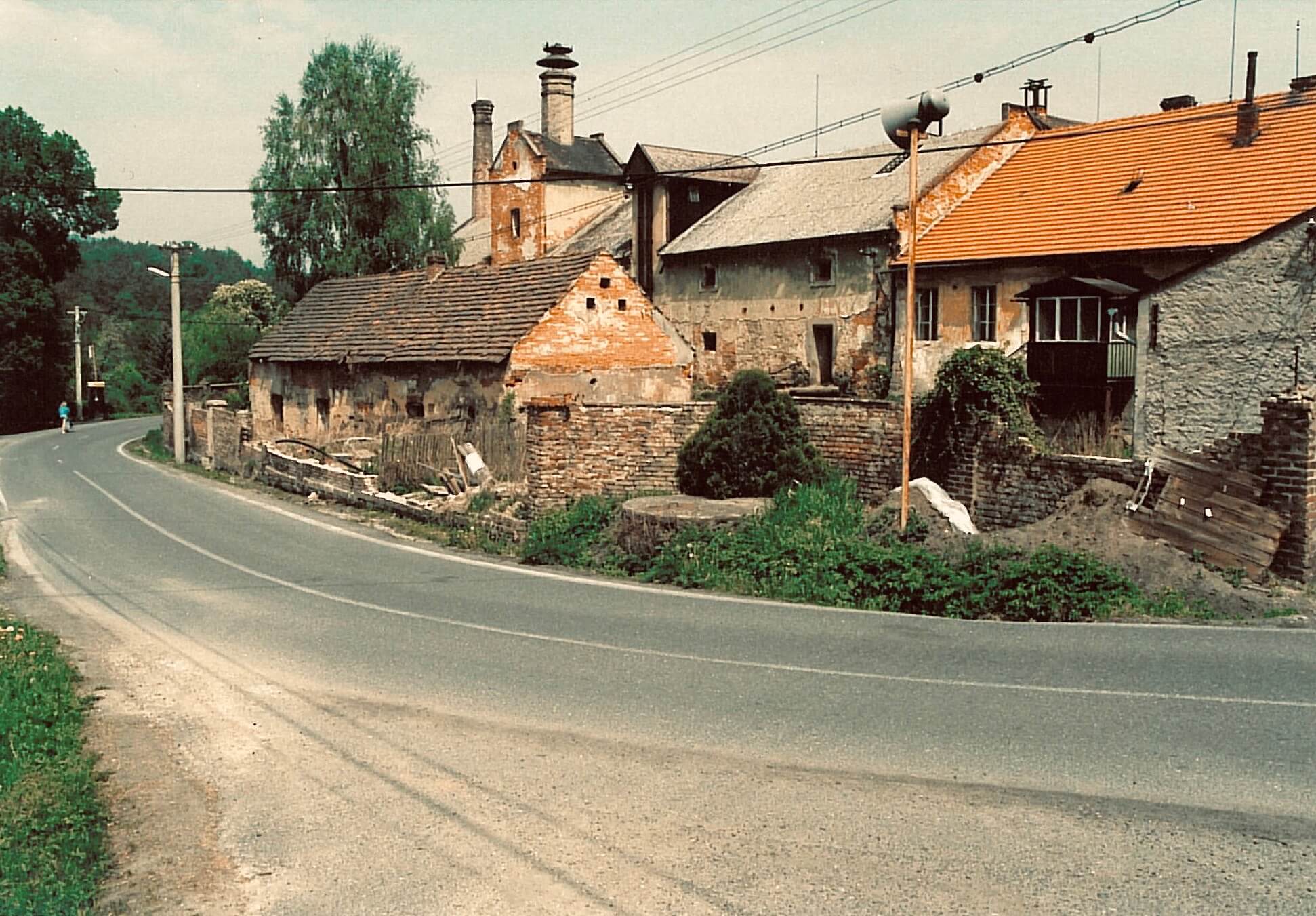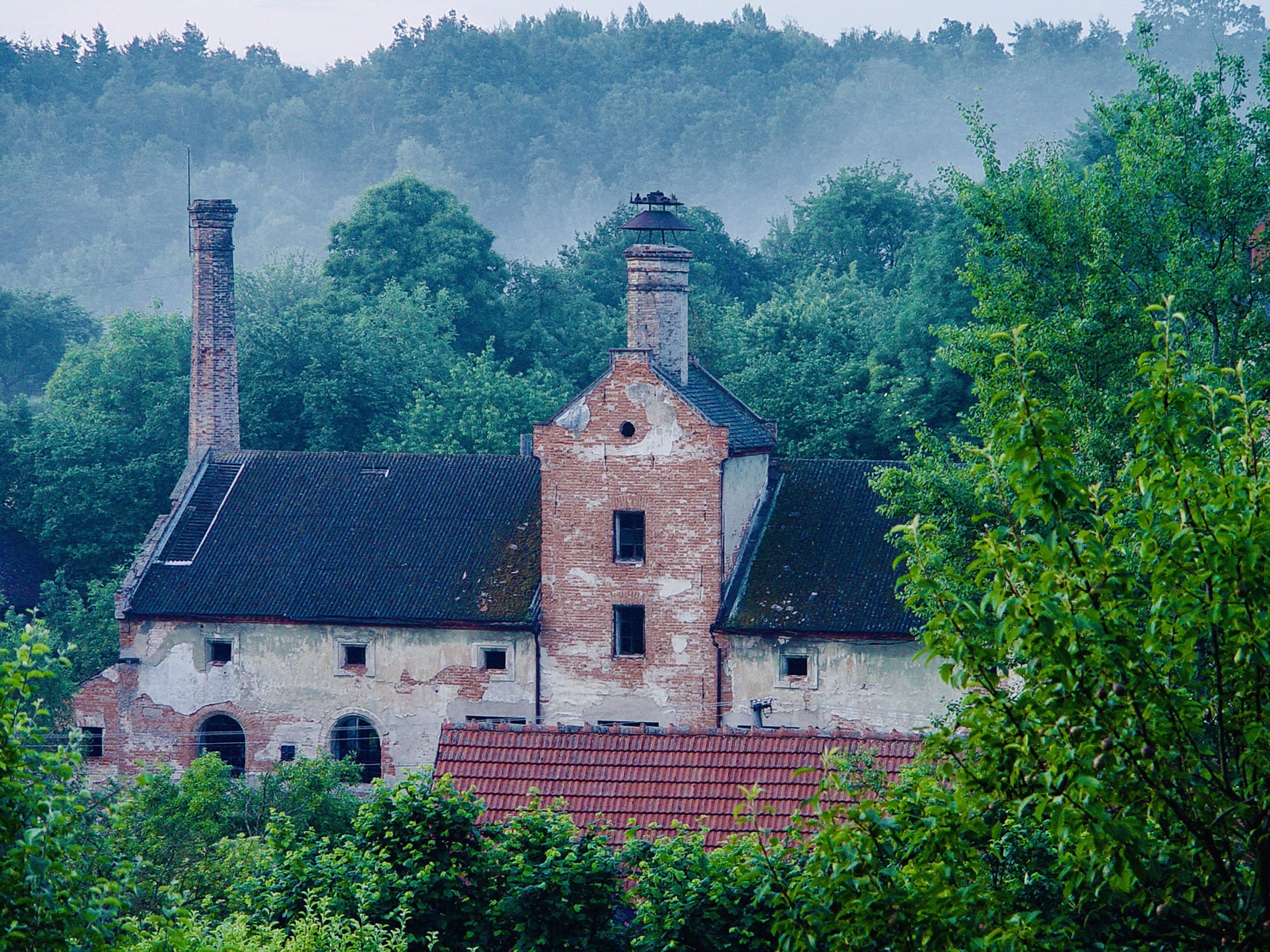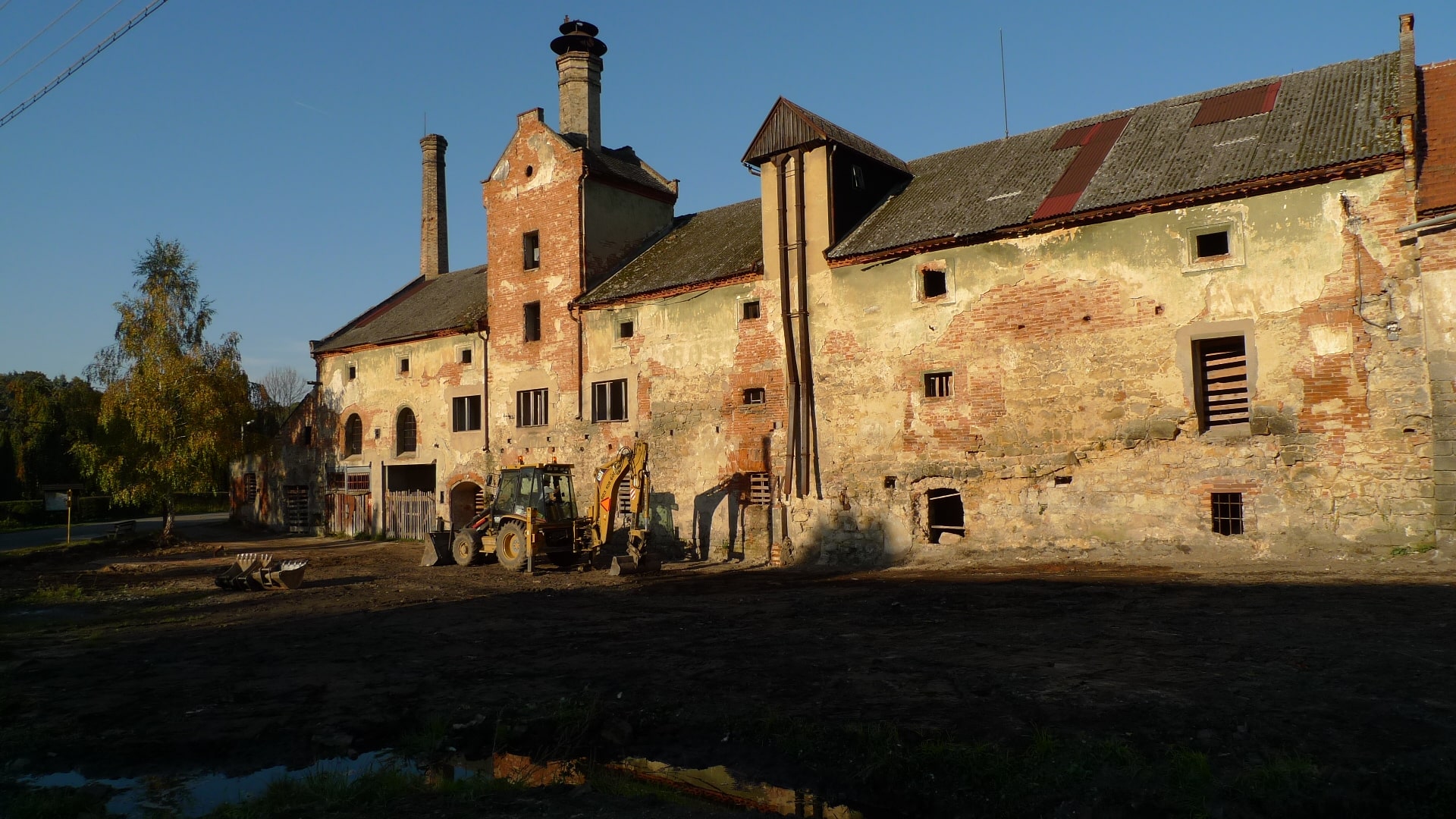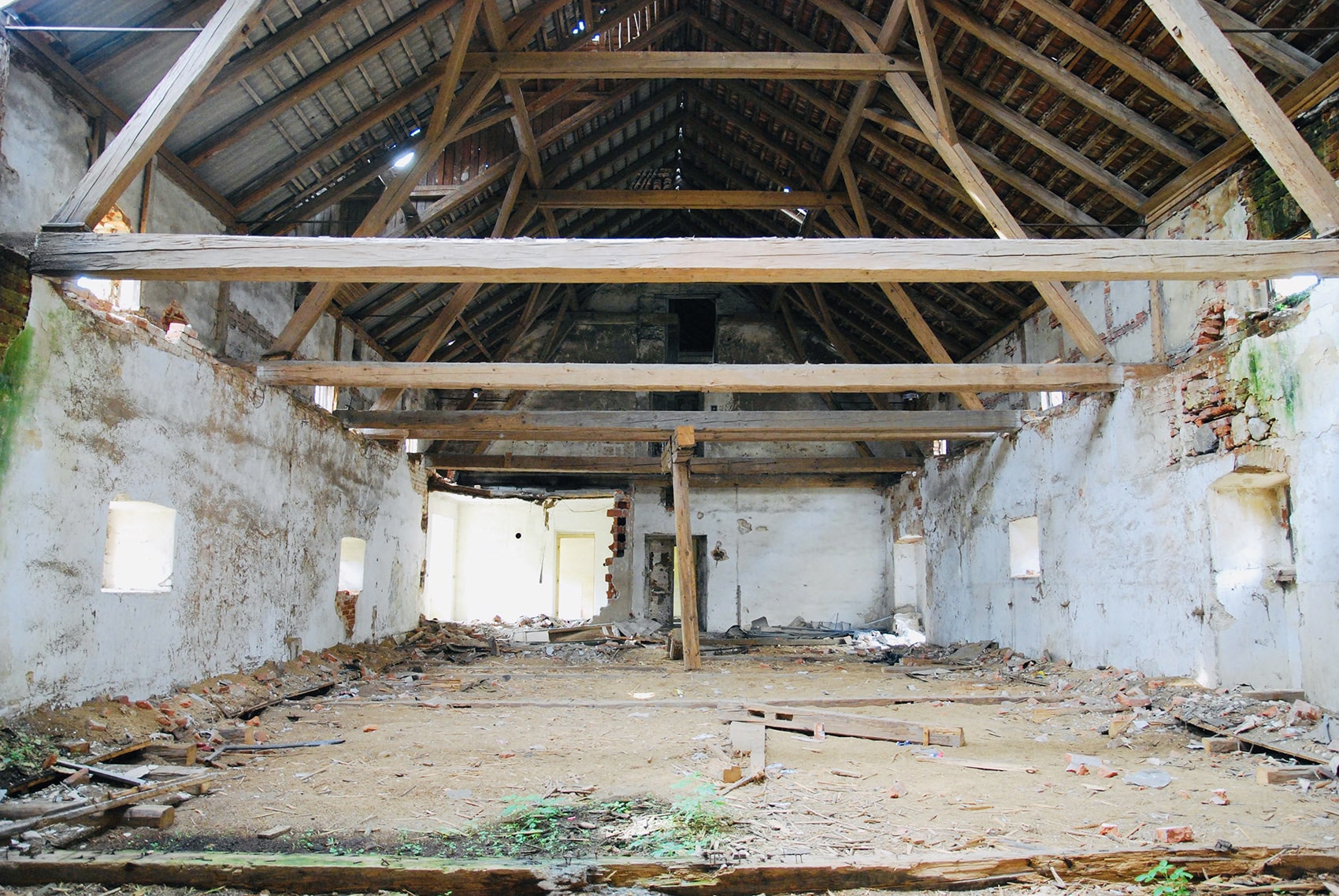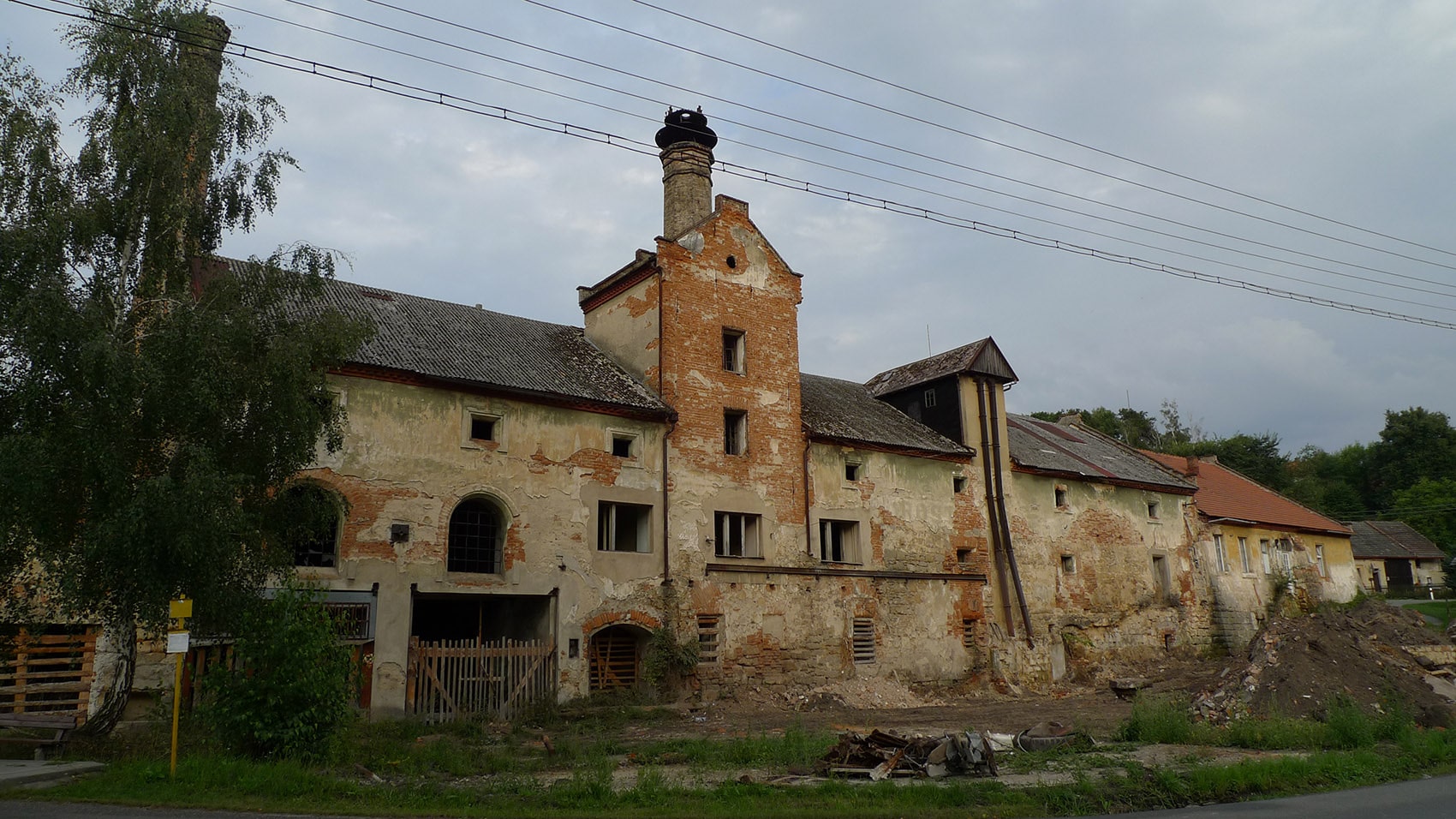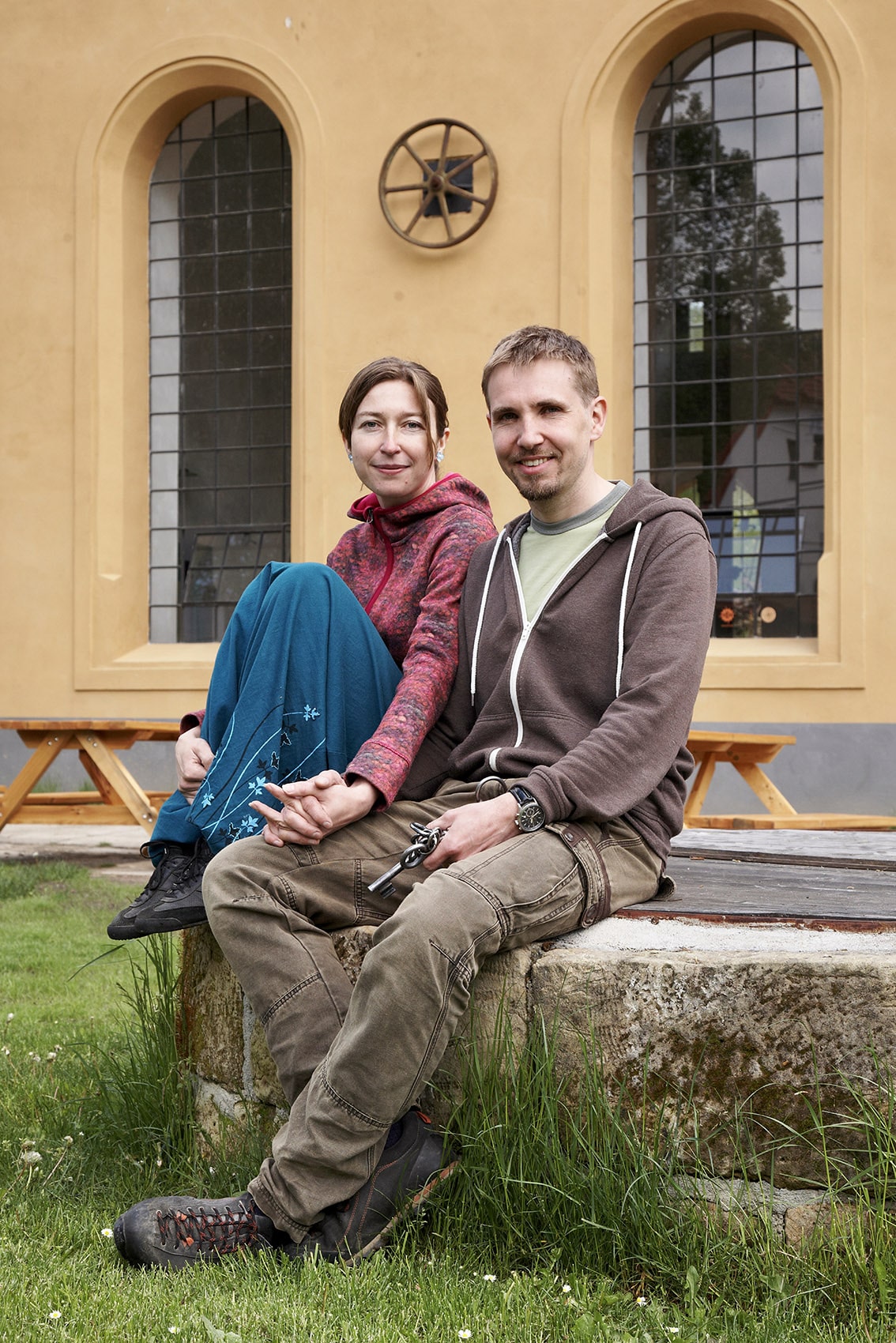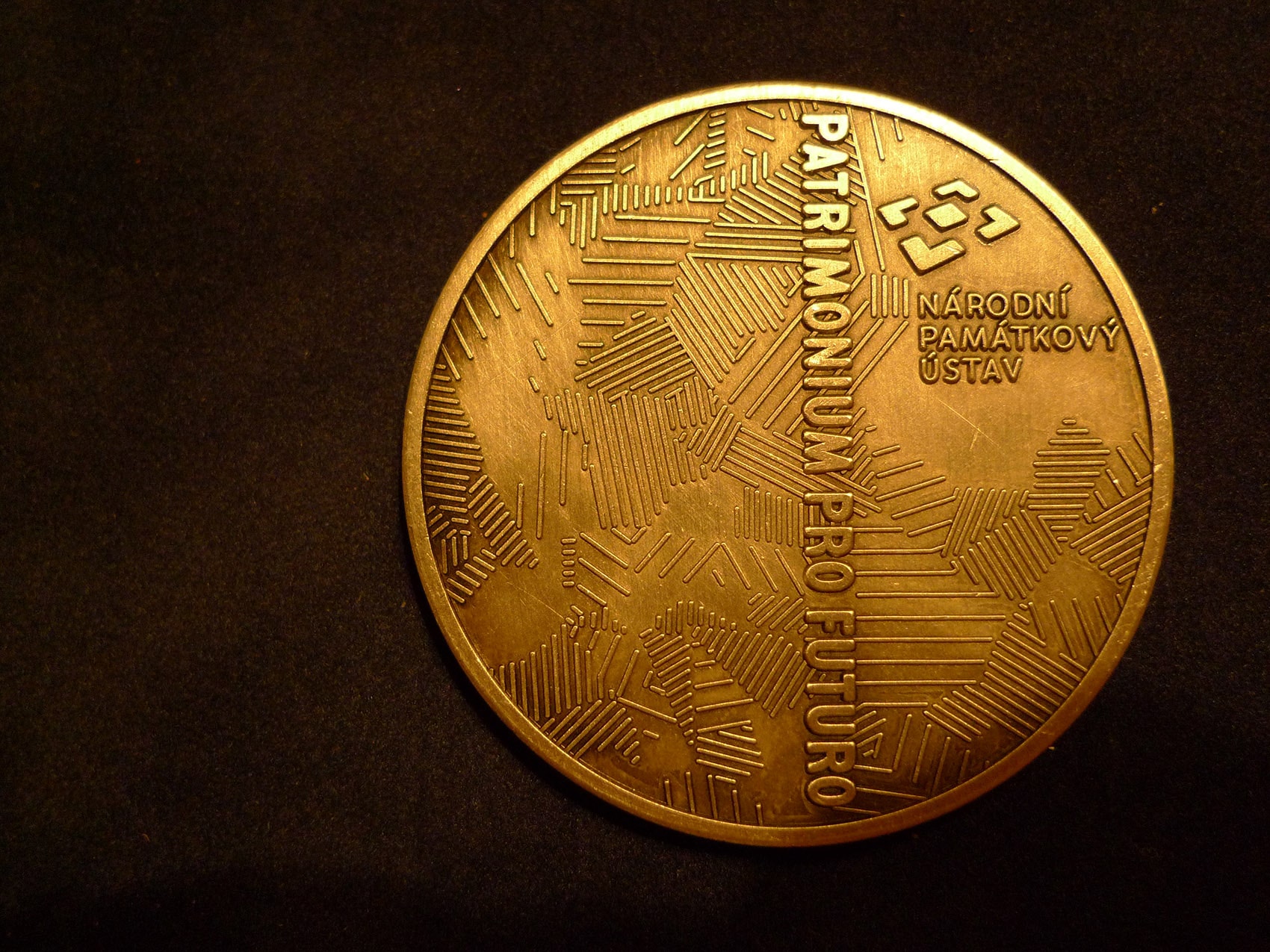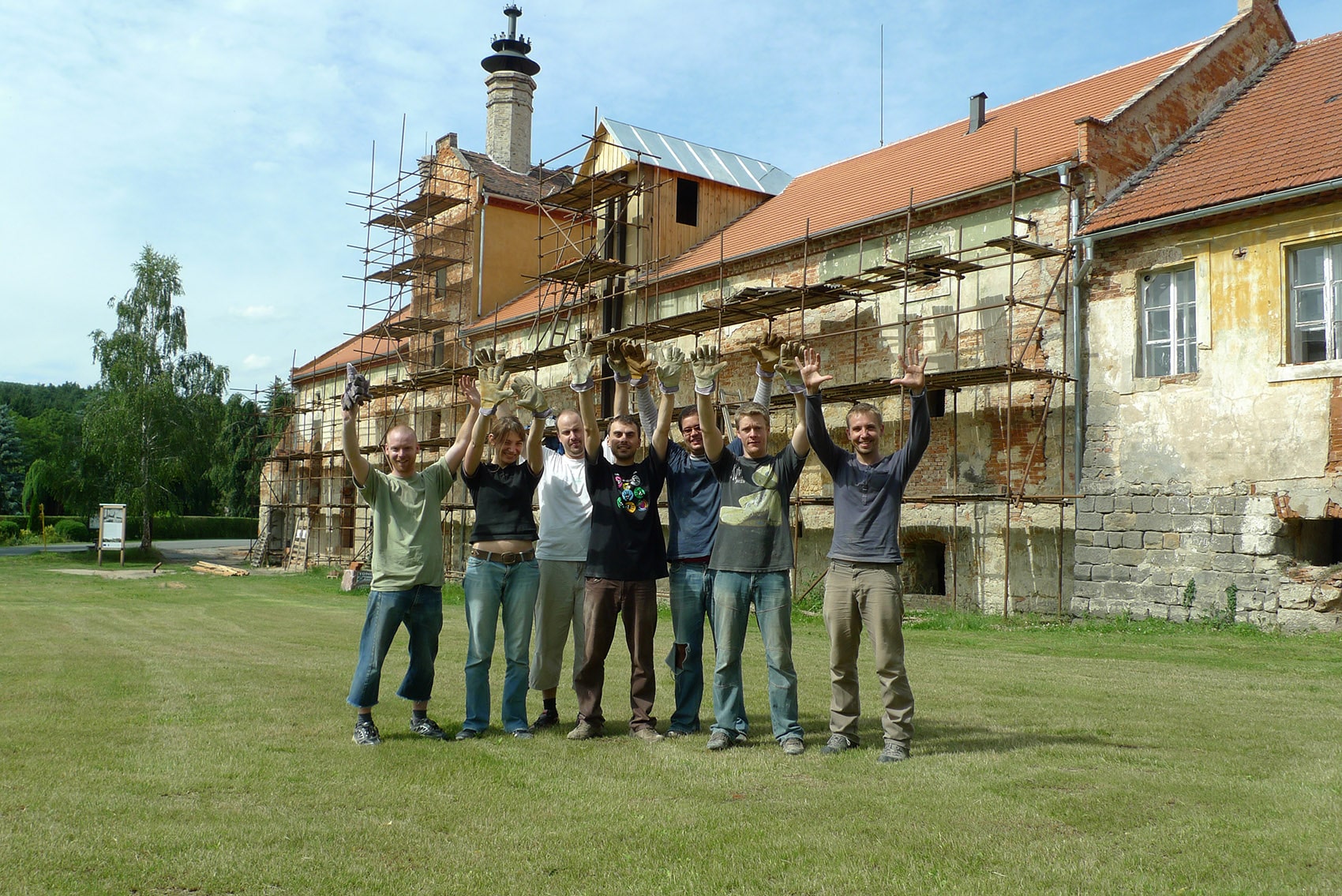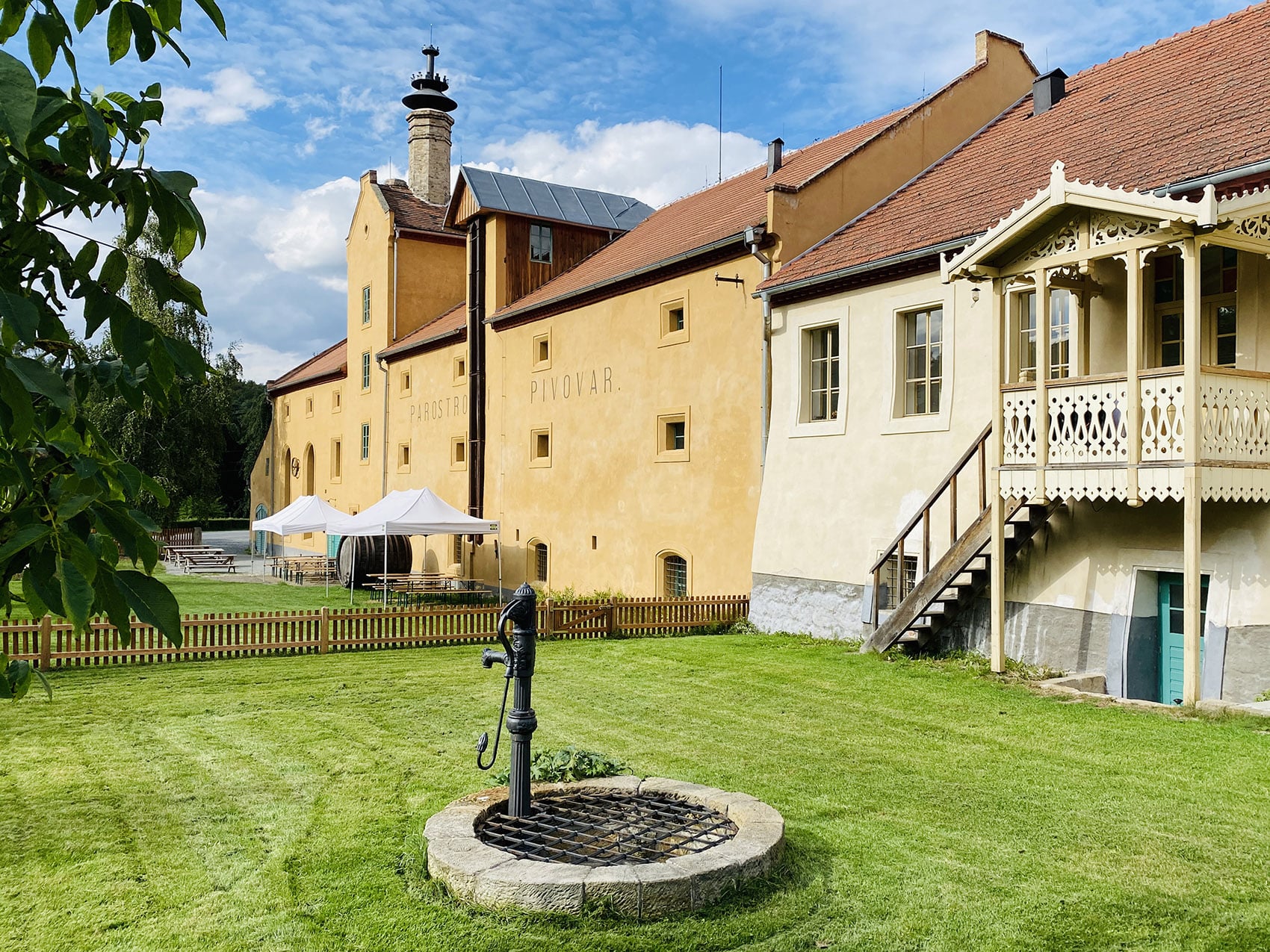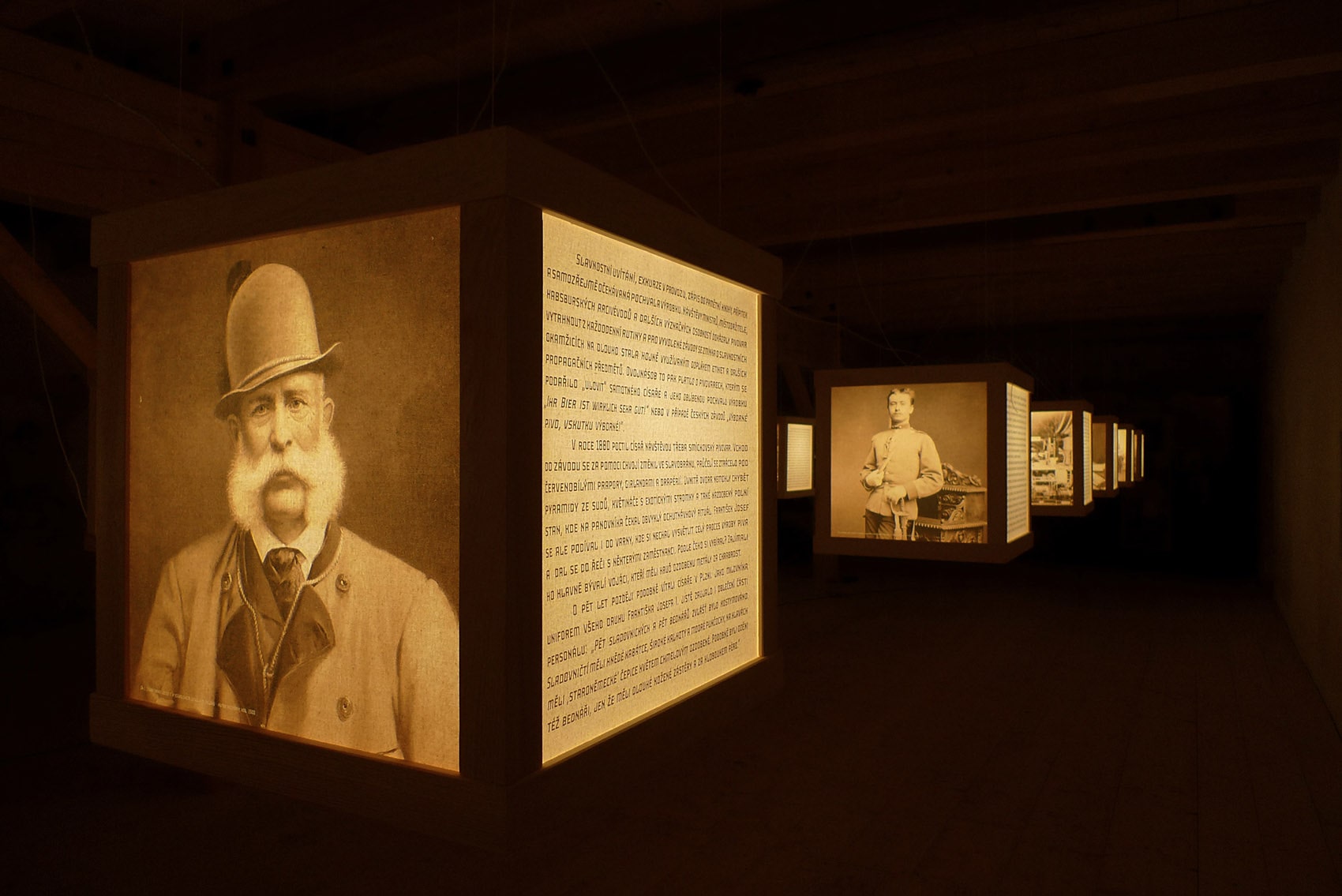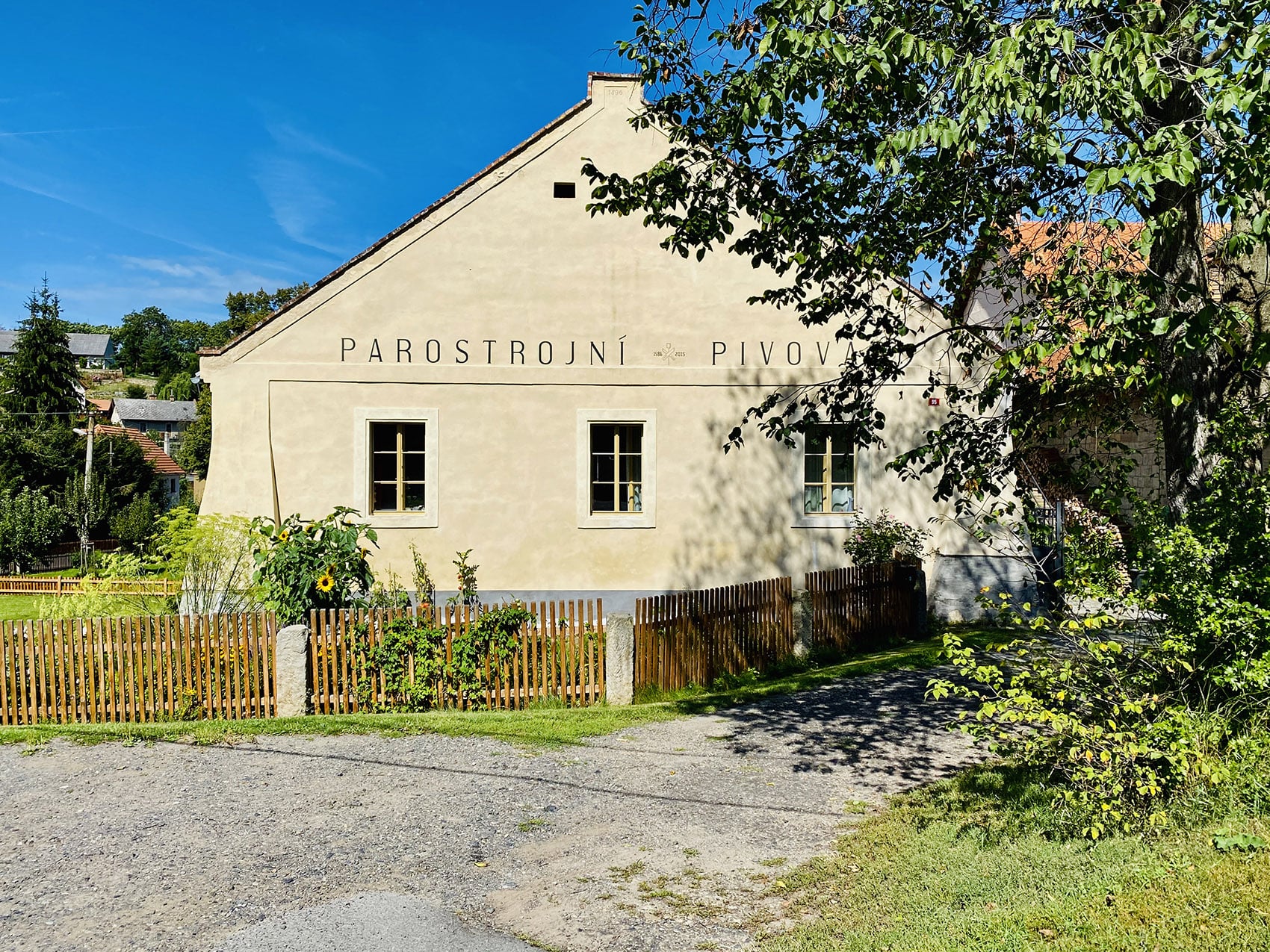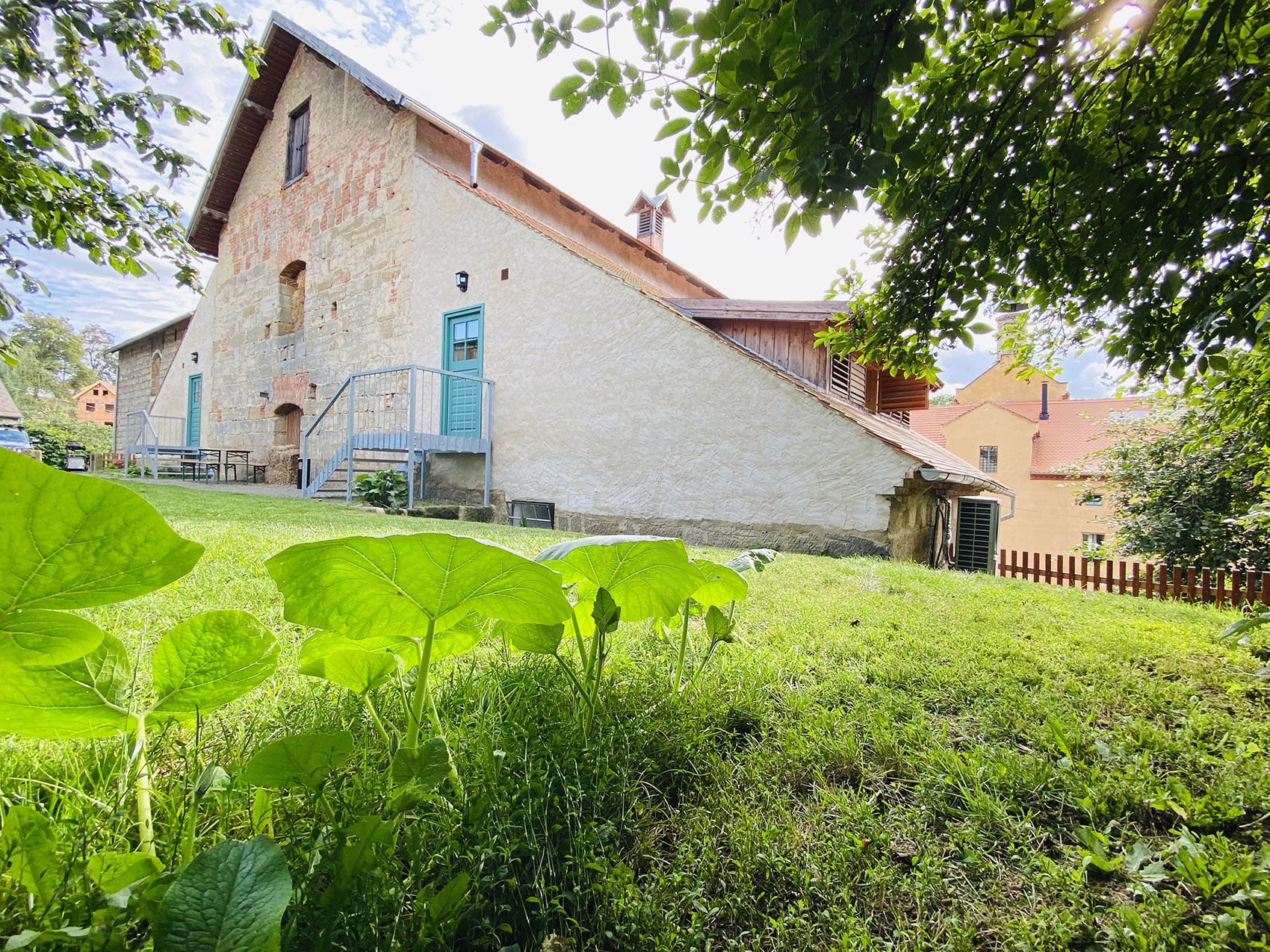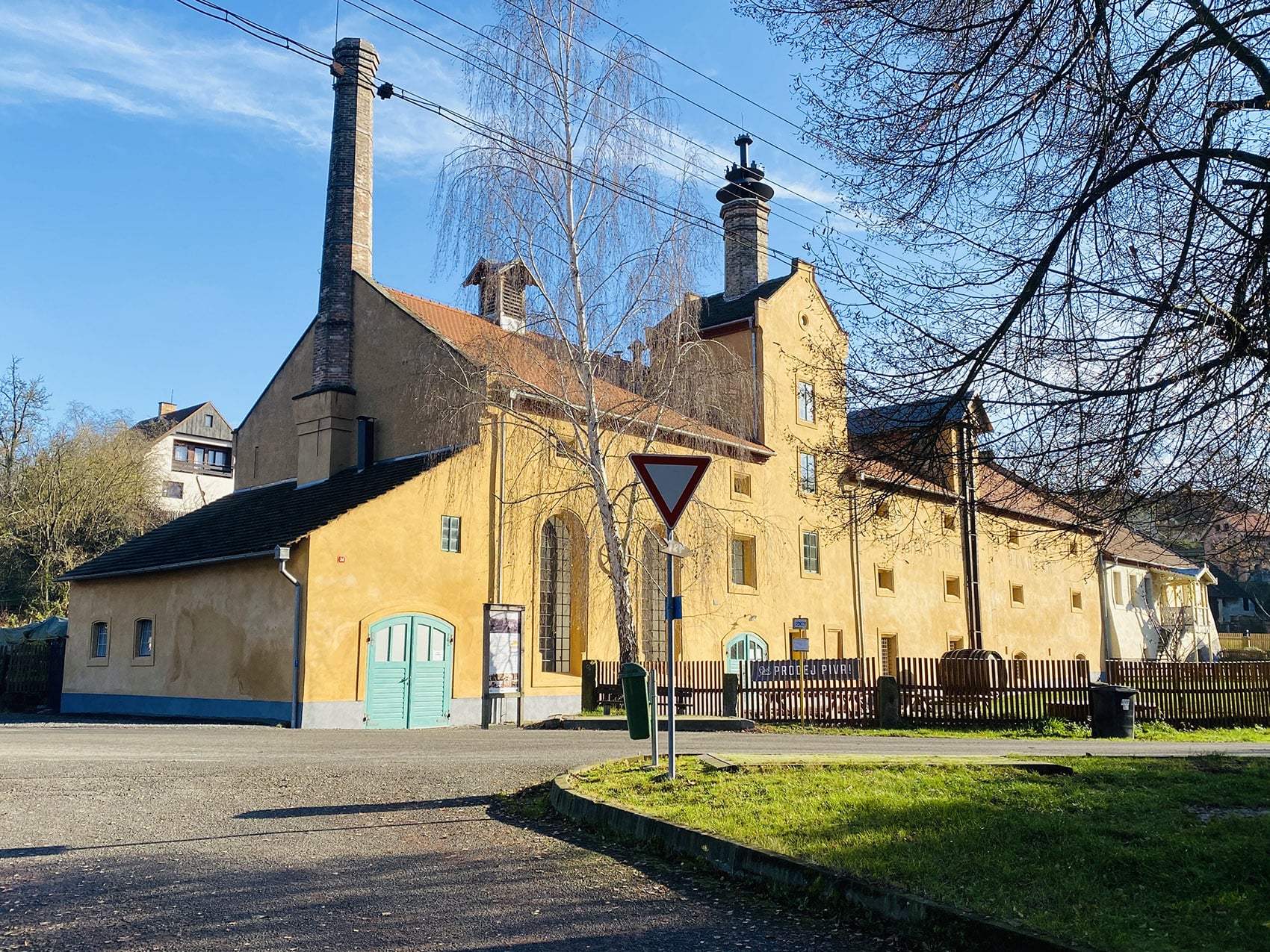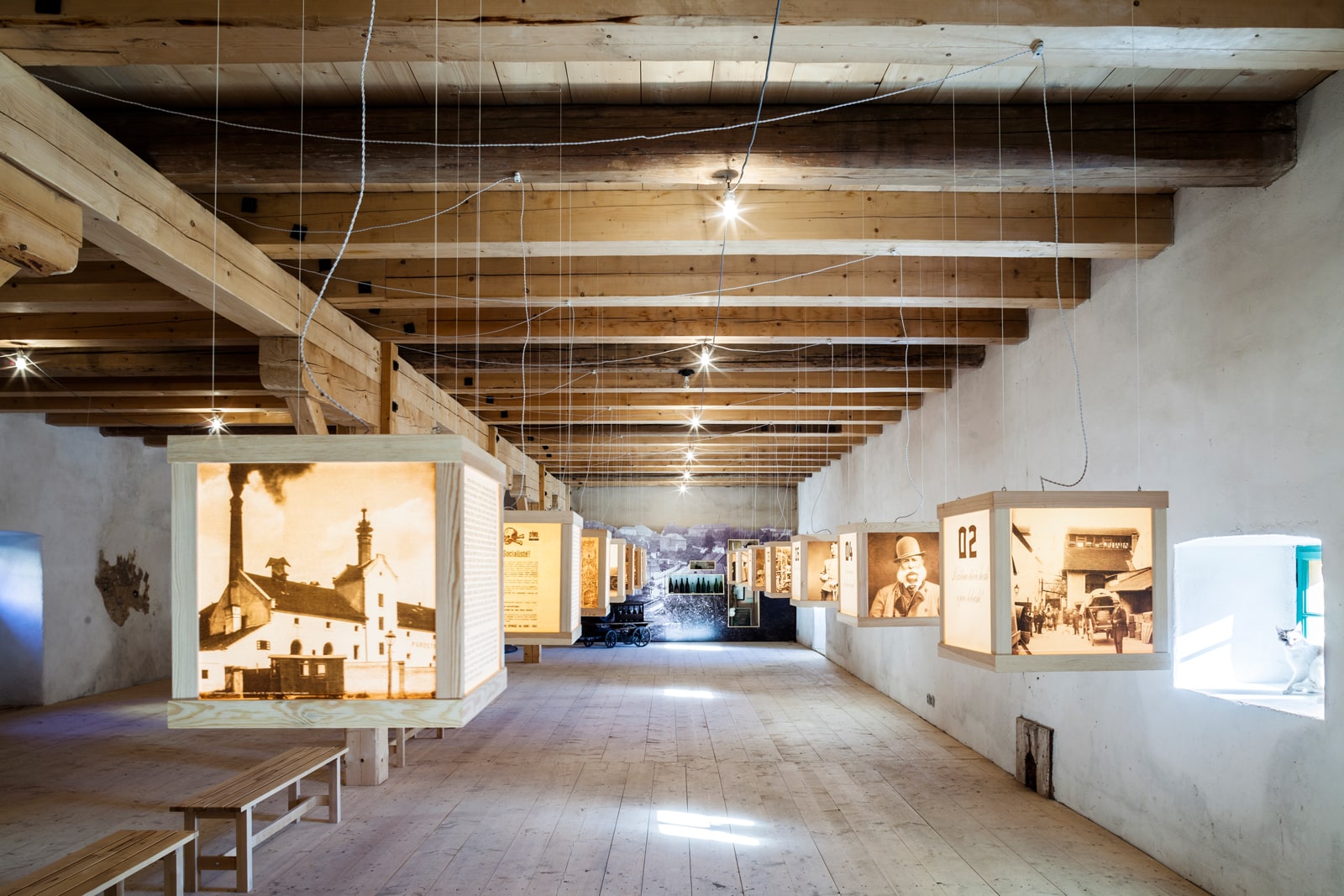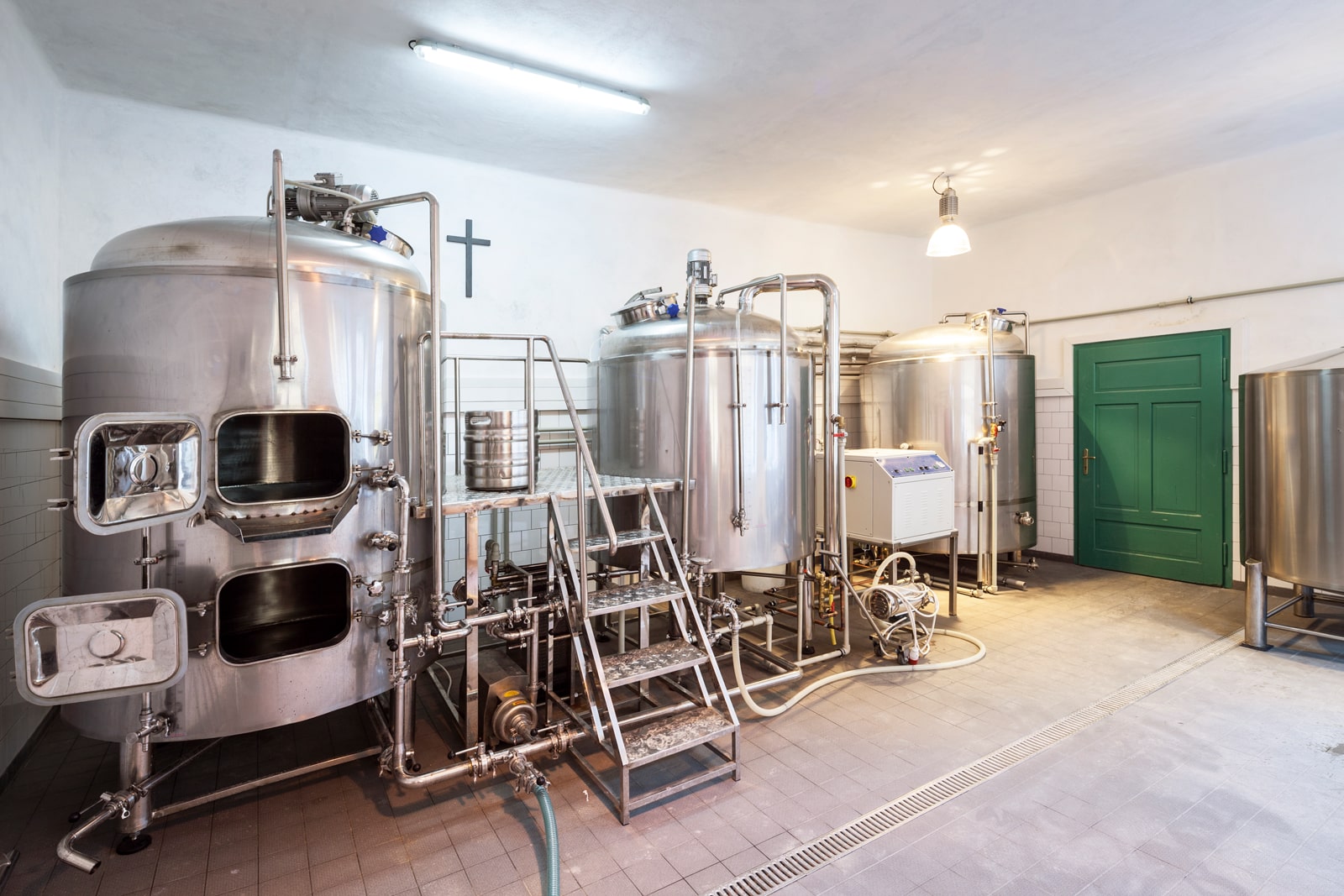A Restoration Brewery
WE ARE THE FUTURE OF THE BREWING TRADITION IN LOBEČ
ESTABLISHMENT OF THE BREWERY AND THE LORDS OF LOBEČ
We do not know the exact date of the establishment of our brewery. It probably happened sometime in the middle of the 16th century. Until recently, it was said that the brewery was 100 years younger, and thanks to historians, today we can assume that the founder of the brewery was a family of Lobeč noblemen, who managed an estate or fortress mentioned at the beginning of the 13th century. For many centuries, the fate of the brewery was connected with the Lobeč estate and the nobility.
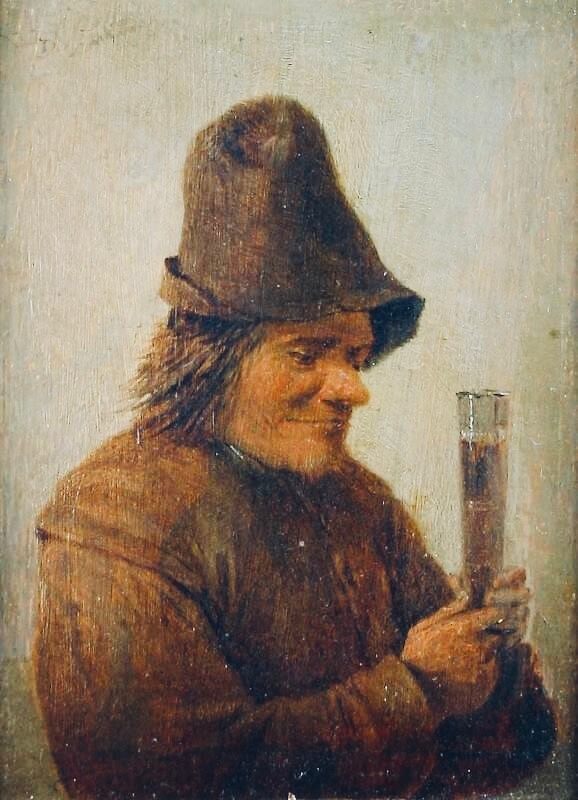
“Drinker”, an oil painting, used with agreement of the Moravian Gallery in Brno, author: David Teniers Jr.
1586
Kryštof Maltster
The first written mention of our brewery is from April 7, 1586, when Jindřich Lobečský of Lobeč sold the brewery to his cousin Bohunka Kelblová of Geyzink. Interestingly, the name of Kryštof Sladovník, or Christopher “Maltster” is excluded from the list of serfs. Mentioned is a functioning brewery, a malt-house and pub, and also the fact that the seller, Mr. Jindřich, stipulated, as a condition of sale, the receipt of half a keg of good beer and one full keg of small or table beer from each future batch. When Jindřich reacquires the improved property in Lobeč 11 years later, the brewery is described as having brew kettles, vats, barrels and utensils, a malt-house and a self-turning mill. There was also a hop garden in the yard.
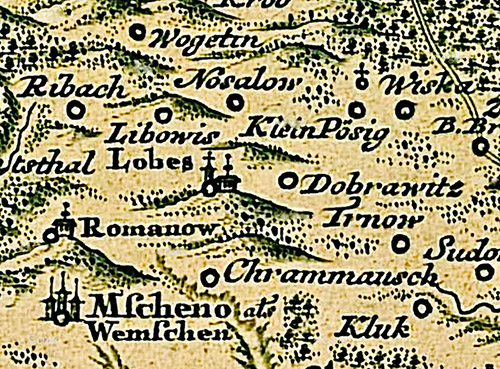
Map of Bohemia, detail, 1726, Central Land Registry Archive, Prague
1631
FOR THE BENEFIT OF THE WALLENSTEIN
During the Thirty Years' War, after being confiscated from the fugitive leader of the Bohemian Revolt, Václav Berka, Sr. of Dubá, our brewery became the property of the Imperial General Albrecht von Wallenstein. Under his protection, and and in fact to its benefit, in bad times the brewery did not stop brewing, and even, at the expense of disappearing competition, increased production. In 1631, it produced 19 batches @ 20 barrels a batch, and ran three pubs and nine taverns.
1638
A REWARD FOR DIRTY WORK
After Albrecht von Wallenstein's assassination in Cheb in 1634, the Lobeč property, as a reward for his participation in the killing, was awarded to a Lieutenant Colonel of the Imperial Dragoons of Irish descent, Robert Geraldine, who settled in Lobeč in 1638. The Geraldines restored the country fortress, modernized the brewery and set up a distillery opposite the brewery. After 1642, the estate was managed by his widow Marie Anežka and her second husband Filip Longueval. Martin Raibr was mentioned as the brewer in Lobeč in 1644, and his son Kryštof also later became a brewer.
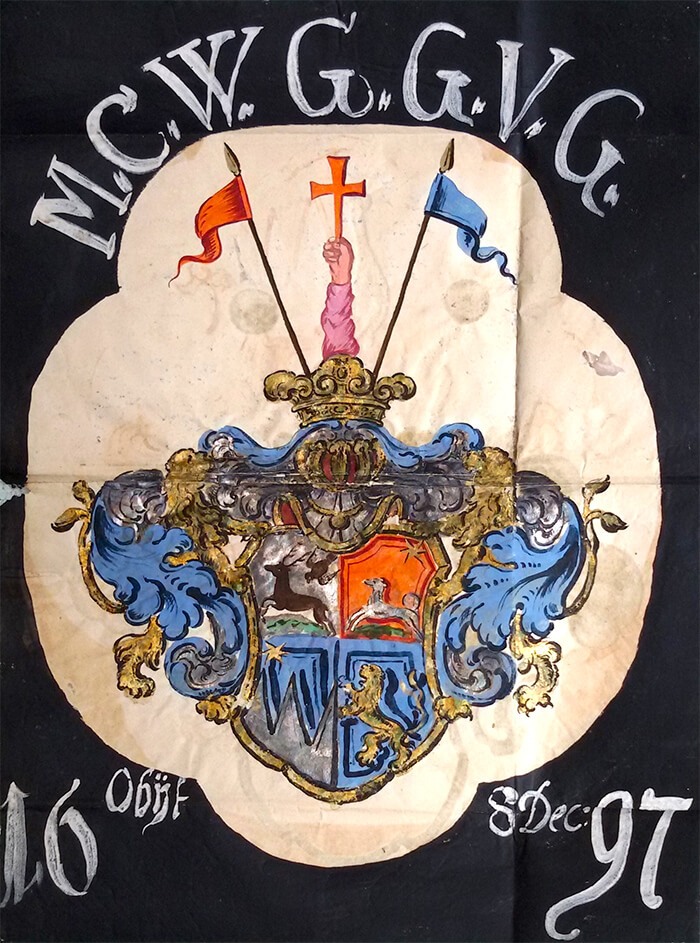
The funeral shield of Maria Klára Věžníková, b. Geraldinie, National Archive Prague (Wunschwitz Genealogical-Heraldic Collection, id. 299)
1654
Věžník’s INVESTMENT
In 1654, the provincial judge and royal council Odolen Věžník of Věžník. acquired Lobeč through marriage to Geraldine's daughter, Maria Klára. He modernised the brewery for greater sales, because after the fire at the neighbouring Mšeno Brewery, the Lobeč nobility forced the serfs to buy beer exclusively from Lobeč. The Věžník family passed down the property to the wider family over the years, until 1765, when our brewery was brewing 672 barrels of beer a year. In 1727, Jan Ignác Věžník built a Baroque chateau above the brewery, and its ancient rock cellars were used by the brewery as a cellar during the summer months.
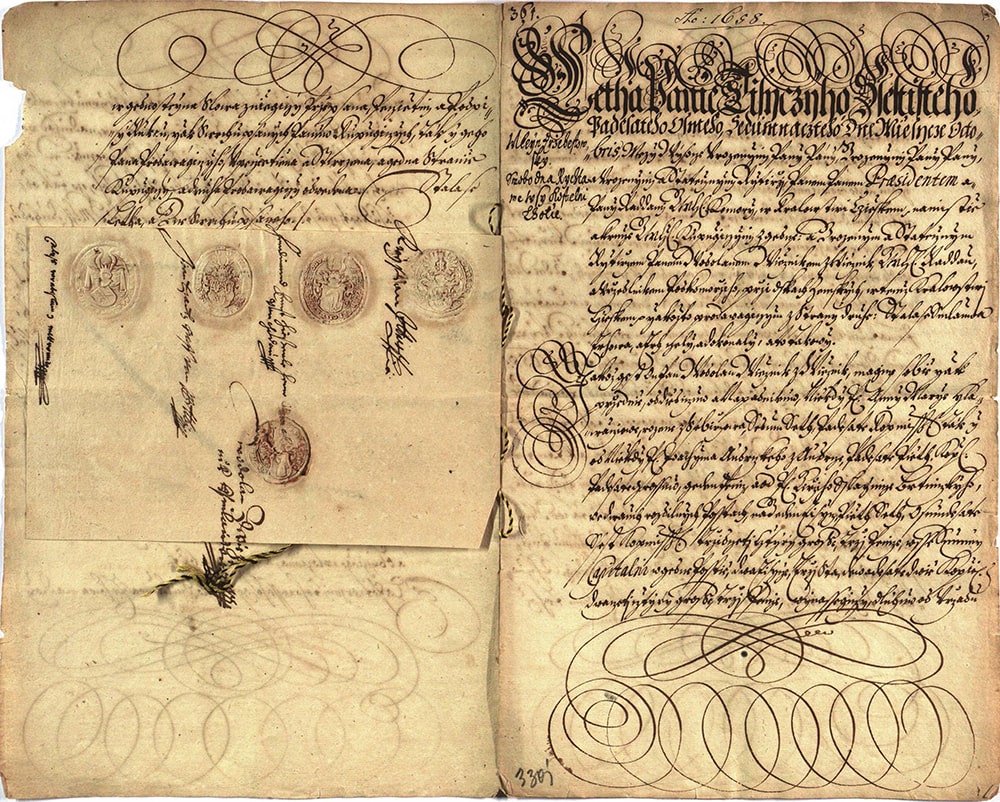
Kupní smlouva Odolena Věžníka z Věžník, 1658, Národní archiv (České gubernium, i. č. 4381)
1765
THE COUNTS' CLARY-ALDRINGEN AND KOUNIC
Through marriage and subsequent inheritances, our brewery fell into the hands of a member of the Imperial Council, Count Philip Clary-Aldringen, in 1765 and remained in the family for four decades. Subsequently, a number of speculators tried their luck, but after 1807, the Czech branch of the Counts of Kounice bought the brewery. In particular, Count Michal Karel von Kounic, Sr. was a good manager and initiated some construction modifications and the modernisation of the operation of the brewery.
1828
THE BURGHER FAMILY VANKA
In 1828, the Lobeč estate, including the brewery under the leadership of the brewmaster Antonin Mayer, was bought by a Prague burgher and rich brewer, František Vaňka and his wife Terezia. In 1838, Václav Vaňka, J.D., later Prague mayor and member of the Czech Parliament, inherited the property. From 1837, Vanek leased the operation of the brewery to the brewers, and the brewery produced around 2 thousand hectolitres a year. Until 1849, the adjacent estate distillery was operated and hops were grown here.
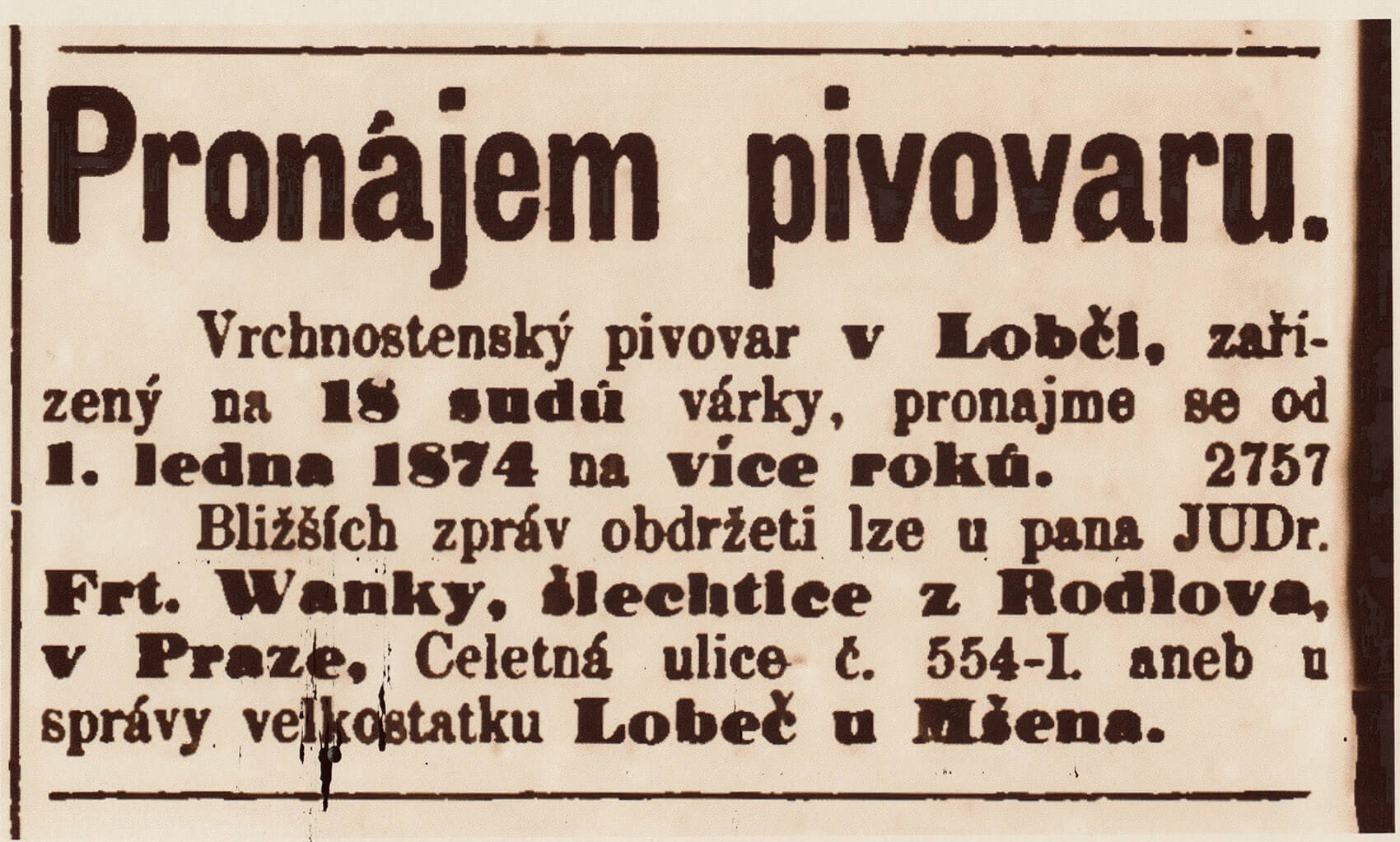
Inzerát, Časopis Kvas, 1873, Pivovarské muzeum v Kostelci nad Č. Lesy
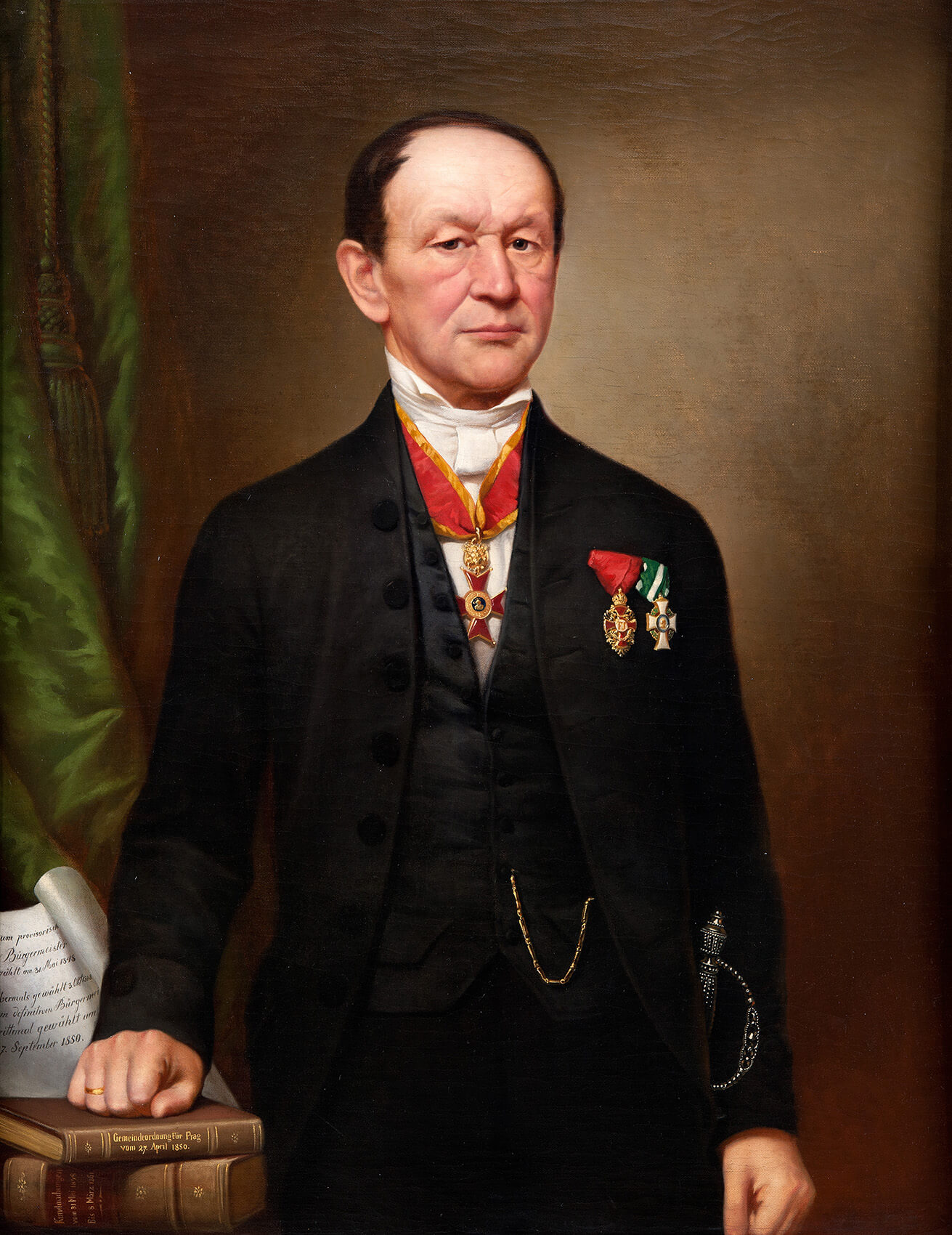
Portrét JUDr. Václava Vaňky, Jan Adolf Brandejs, 1850, Galerie Hlavního města Prahy
1878
THE EXCELLENT BREWMASTER KELLER
In 1878, Vaňek's heirs sold our brewery to Mr. and Mrs. Mündl, who then leased it in 1882 to the brewer Bohuslav Keller. A later owner, the manufacturer Johann Faltis, also extended Keller's lease, and so the skilful brewer was able to modernize production and increase the production to 3,000. hl per year.
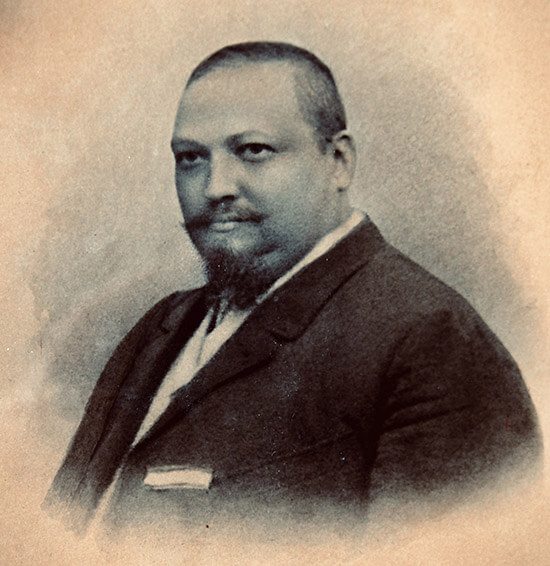
Fotografie sládka Bohuslava Kellera, nedat., rodinný archiv Aleny Houserové

Inzerát, Časopis Kvas, 1883, Pivovarské muzeum v Kostelci nad Č. Lesy
1891
CICVÁREK'S STEAM-POWER RECONSTRUCTION
The brewery and the manor farm estate were bought by JUDr. Rudolf Cicvárek, a lawyer and member of the Landtag, who invested considerable assets in the reconstruction and modernization of the brewery into a steam-engine powered operation with a brewing capacity of 60 hl of beer, and an annual production of 10,000 hl. The complex was rebuilt based on the plans of the famous brewery engineer, Josef Rosenberg, and added a huge refrigeration area to the yard. The first batch of beer brewed in this industrial brewery was in February 1896. In the years 1901 and 1902, the brewery produced 12.3 thousand. hl.
1903
PARTNERS AND THE BREWMASTER TOMÁNEK
The owner, indebted by the investment, separated the brewery from the large estate and first put it into administration; in 1904 it was transferred into the property of the company “Steam-Powered Brewery Lobeč”. Josef Tománek, a great brewer, brought the brewery out of the initial chaos, the turnover of brewers and the decline in production. Under his leadership, our brewery experienced a golden age, producing around 10 thousand hectolitres every year, and our beer was a favourite in the region. In 1911, our brewery also won a licence for the production of soda water and carbonated beverages and launched lemon and raspberry flavoured pop.
1916
WAR AND POST-WAR STRESSES
The First World War meant a sharp decrease in production. Lack of raw materials and rising prices in 1917/1918 pushed production to only a tenth of former levels. Without a supply of barley, an experienced brewer had to make do with what was available. He added sugar, rice, suagar beet, even grass in place of hops. In 1918, Josef Tománek himself was sent to the front. However, in the post-war period, he failed to repeat his previous success, and with his departure in 1921, there was a period of loss, until operations were ceased in 1925 and the partners were forced to look for a buyer.
1927
AN ALLIANCE WITH THE COMPETITION
The remaining 4 partners sold the brewery to its competitor in 1927, and the Podkováň Brewery secured a dominant position in the region with a new subsidiary in Lobeč. The newly appointed head of the company was the brewmaster František Klíma, who was to become the last brewer in Lobeč for a long time. The competing brewery did not take good care of its acquisition and, in the 1930's, with the lack of necessary investment, the brewery stagnated, with production of between 3.5 and 5 thousand hectolitres.
1943
PRODUCTION DISCONTINUED
Lobeč became one of the last Czech villages on the border of the Sudetenland. As late as 1942, the annual production of the brewery was 4.3 thousand hl and light and dark beers were still being produced. A year later, beer production was stopped due to an increased tax burden, unprofitability and a lack of motivation from Podkováň Brewery. The bottling of Podkováň beer continued, and the malt roaster was leased out. The remaining technology was mothballed, and it was thought that production would resume after the war.
1948
NATIONALIZATION, DEVASTATION AND DESPAIR
The mothballed brewery, as a part of the Podkováň Brewery, was nationalized in 1948 and, as part of the North Bohemian Breweries State Company, was closed down a year later. In 1956, the complex was entrusted to a Liberec Fruit and Vegetable shop; then later to the farmers of the local State Farm Vysoká, who stored their tractors in the brew hall, and until the 1980's used it as a workshop, warehouses and flats. The area gradually fell into disrepair and at the end of the millennium became a sad, abandoned, ruin, spoiling the center of the village. Even the Post-Velvet Revolution owners did nothing to stop the rot; on the contrary, they irreversibly damaged the building by dismantling it for bricks and wood.
2007
ARCHITECTS SAVE THE MONUMENT
While on a visit to the village in May 2007, the architects Pavel and Jana Prouza noticed the building. The atmosphere of a technical monument in a unique rural and natural environment appealed to them both. The architects eventually became the owners of the brewery and began a demanding process, subsequently leading to its rescue. In 2009, construction work could finally begin, which, despite numerous setbacks, is ongoing to the current day. In the meantime, the state has declared the area a cultural monument and has also made public resources available. The brewery has been restored as a monument, it is presented as having cultural value and is one of the most invaluable examples of historic Czech breweries. This extraordinary approach has won the brewery and its team numerous prestigious awards.
2015
PRODUCTION RESTART AND PUBLIC OPENING
The building rescue in 2015 eventually led to the revival of the Lobeč beer brand with its impressive tradition. The renewed brewery, with a brewing hall capacity of 10 hectolitres, and in cooperation with our partners, today produces around 1000 hectolitres of craft beer from original recipes, using local ingredients. Following the resumption of production, the complex was opened to the public in the form of a brewery bar or taproom, and guided tours of the historical parts of the brewery, with a presentation on the tradition of beer brewing in Lobeč. In 2019, apartments for guests were established in the attic of the brewery and a brewery kitchen was put into operation. Today, the area of the technical monument of the Steam Powered Brewery Lobeč is a popular tourist attraction for Kokořín, the Mácha Lake area, and, in fact,the whole region.
Publication or further dissemination of the content of this site, such as photos, visualizations, texts or videos, is prohibited without our written consent.


Do you know what makes us unique?
Get to know the story of the rescue of the brewery and the 500-year brewing tradition.
Brewery tour
